




enezuela? But surely that country is much too dangerous! We hear that all the time when people find out where our journey is going. We do understand it: Venezuela does not have a good reputation. Political unrest, repression, corruption, increasing poverty, a lot of crime, … the list of reasons to avoid the country is long. But Venezuela also has beautiful nature with immense mountain ranges, vast jungles and Caribbean beaches. And on top of that … Venezuela of all places has one of the oldest Porsche Clubs in the world. The latter appeals to us like honey to a fly.
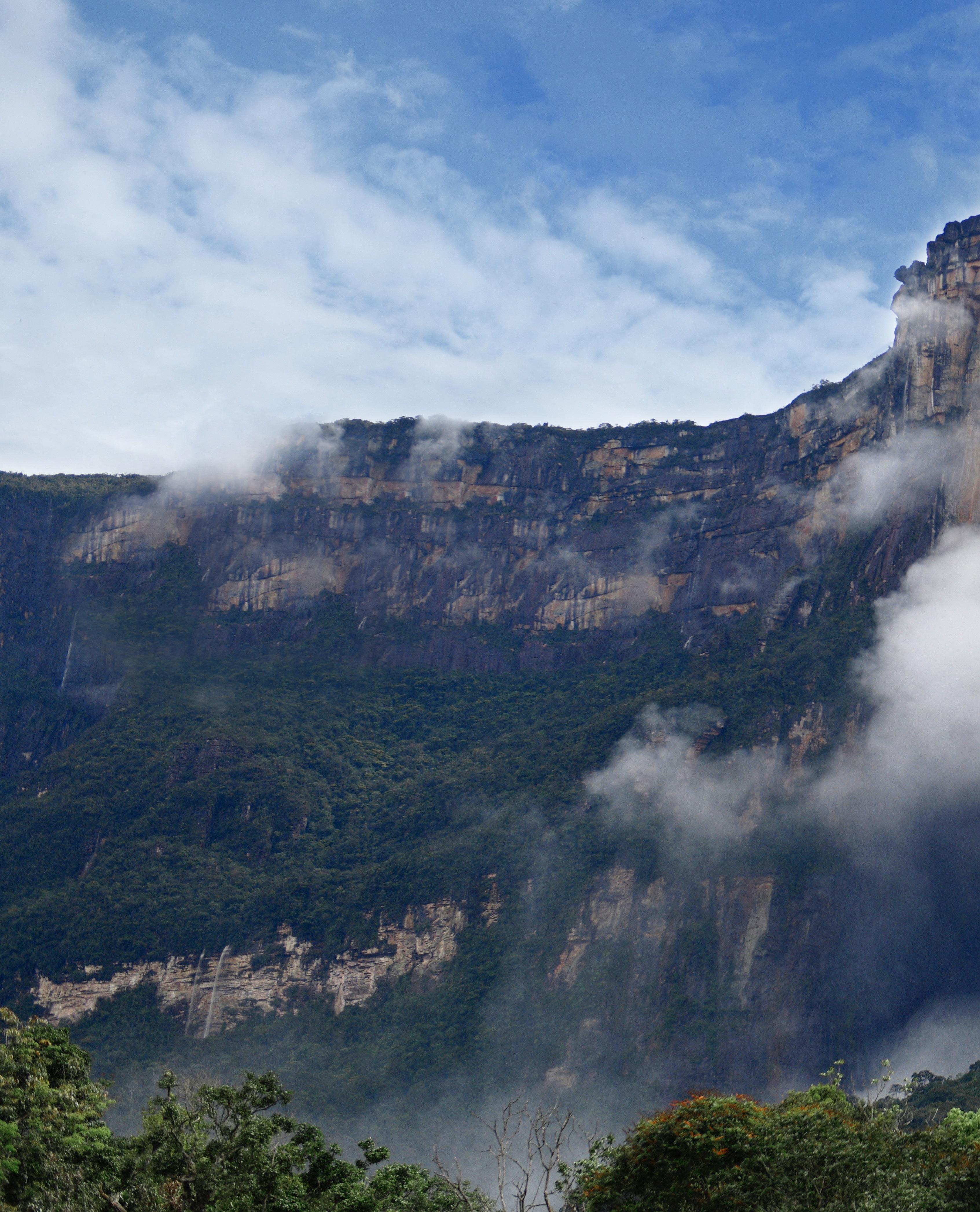

Venezuela is located in the north of South America and is bordered on the north by the Caribbean Sea and the Atlantic Ocean, on the east by Guyana, on the south by Brazil and on the west by Colombia. Off the Venezuelan coast are Aruba, Bonaire, Curaçao, Isla Margarita and Trinidad and Tobago. In terms of size, our destination is the sixth largest country on the South American continent.
What strikes us first of all is how green the capital of Venezuela is. Caracas is stretched out lengthways in a valley of the Cordillera de la Costa Central – a mountain range that separates the city from the Caribbean coast. Caracas is known as one of the most unsafe cities in the world with 122 murders per 100,000 inhabitants. There are many causes for the violence: drug trafficking, income inequality, corruption, overpopulation, political unrest and so on. But we do not want to ignore the city, because Caracas is also the cultural, economic and political centre of the country and to understand Venezuela a visit to the city is a must. Moreover, we have a good guide who will guide us safely through the city.
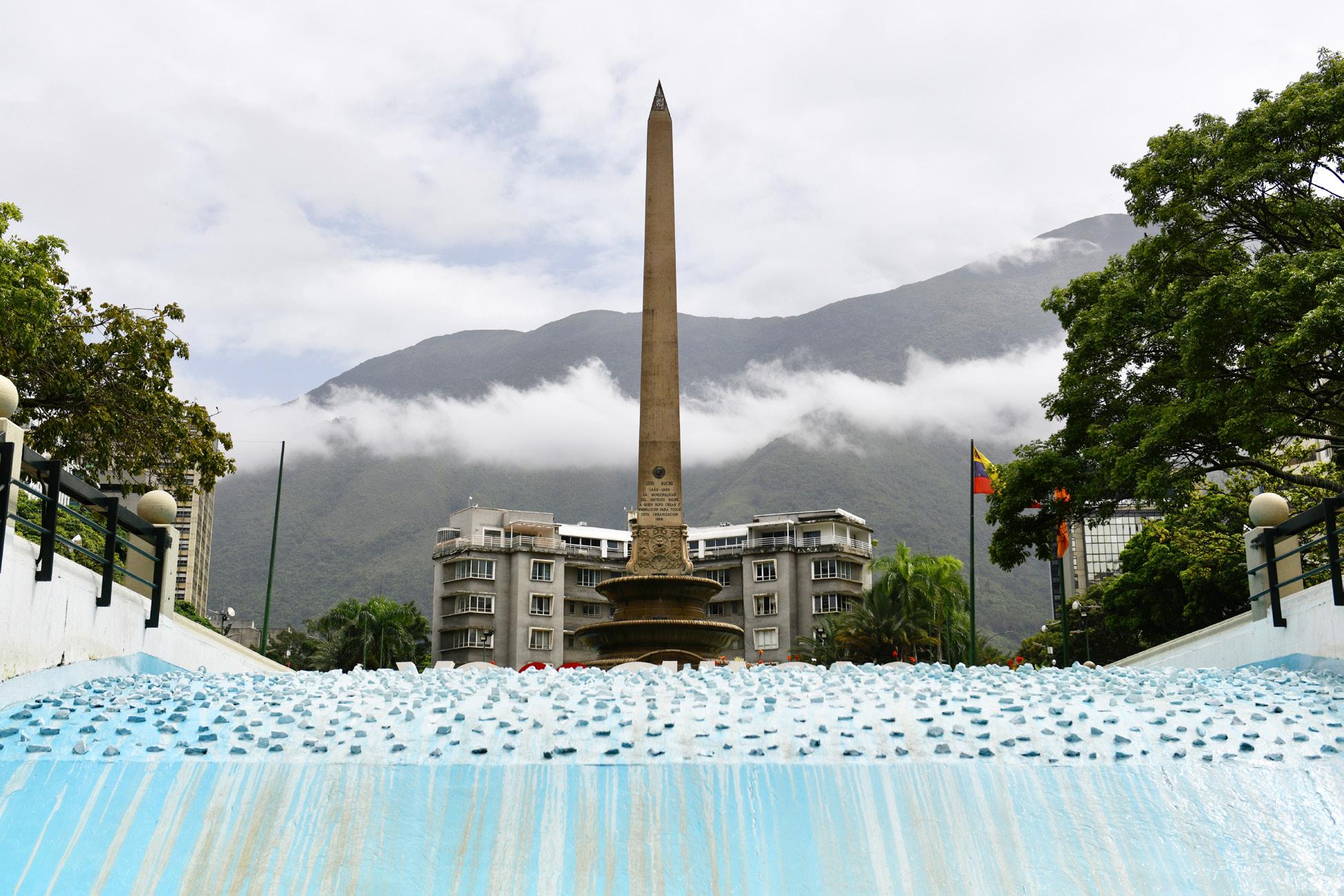
Oil-rich Venezuela was in the 1990s the richest country in South America.
Caracas is a highly segregated city with prosperous neighbourhoods in the east and poor neighbourhoods in the west. We stay in the Renaissance Hotel in the bustling Chacao district. In this business and residential district there are countless restaurants, funky rooftop bars and shopping centres. On the nearby Plaza Altamira is the obelisk that was erected in 1945. At that time, the monument was still the tallest building in the city. The square also houses the former Four Seasons Hotel, which had to close its doors eight years ago because too many opposition leaders gathered there, much to the chagrin of the government.
The capital of Venezuela has an imposing skyline with many office and apartment buildings. It dates back to the 1970s, when the global oil crisis caused commodity prices to rise. Venezuela benefited as one of the largest oil exporters in the world. The oil money easily found its way to Caracas, where the headquarters of the Petróleos de Venezuela - Venezuela's largest and most important company - is located. In the same period, the many highways and viaducts that criss-cross Caracas were also built. The imposing Palacio de Justicia , a government complex with many courtrooms and judi cial facilities, curves across the busy Avenida Bolívar . It is an – in our eyes – ugly construction consisting of two five-storey concrete buildings with the metres-high portrait of Chávez on one side and that of Simón Bolívar on the other. What is clever is that the architect created a pedestrian zone above the highway with squares and parks. A tranquil place that is welcome in this hectic part of the city.
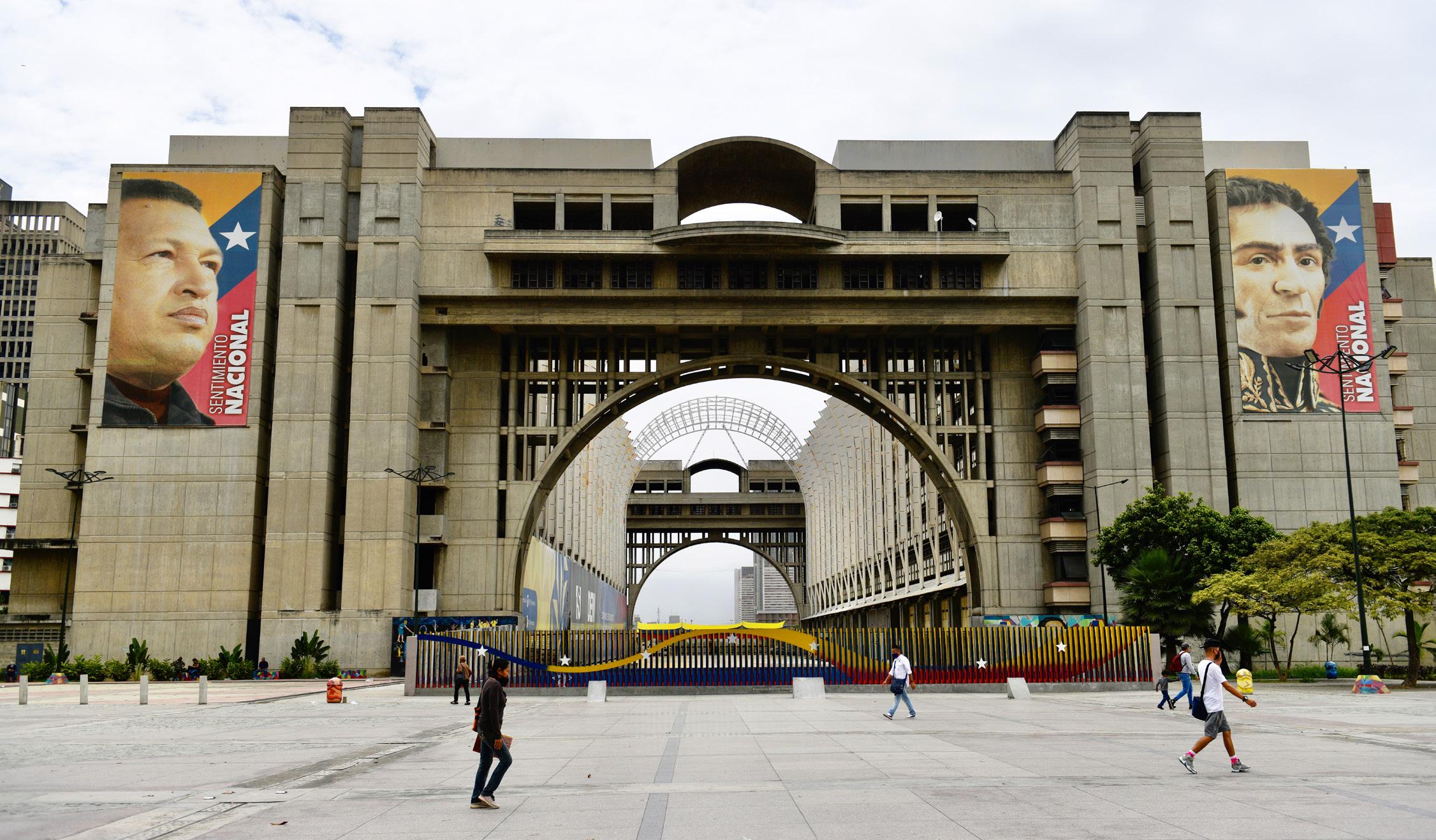
In most places in the city, modern buildings have replaced the colonial buildings, but in the historic centre you can still taste the atmosphere of yesteryear. From his plinth, Simón Bolívar (°1783-†1830) looks down on the passers-by on the square that bears his name. Close to the square is the birthplace of “El Libertador”. Bolívar succeeded in freeing five South American countries from the Spanish yoke. To many he is a hero, although he him self died disappointed because he had not been able to realise his great dream - a “Gran Columbia” , a great South American state. The stark white building nearby is the Capitolio , the former Federal Capitol. It was built under the presidency of Antonio Guzmán Blanco (°1829-†1899). Guzmán was very keen to modernize Caracas and break with the colonial style. The result is a neoclassical building, twenty metres high at the highest point with a bronze dome.
We also walk past “La Esquina Caliente” (literally trans lated: the “hot corner”, although this may remind you of other things). Ever since 1998, when Chávez won his first election, fanatical Chavistas of all ages have gath ered here to discuss politics, comment on the news and debate. They call themselves the “Colectivo Socialista Esquina Caliente”. The organisation was never legal ised but is very active. At the moment it is quiet on the square. A hairdresser has installed himself under a piece of canvas and cuts the hair of passers-by. Men play dom inoes in the shade of the trees. On the surrounding wall are painted faces of many “Esquina Caliente” militants,
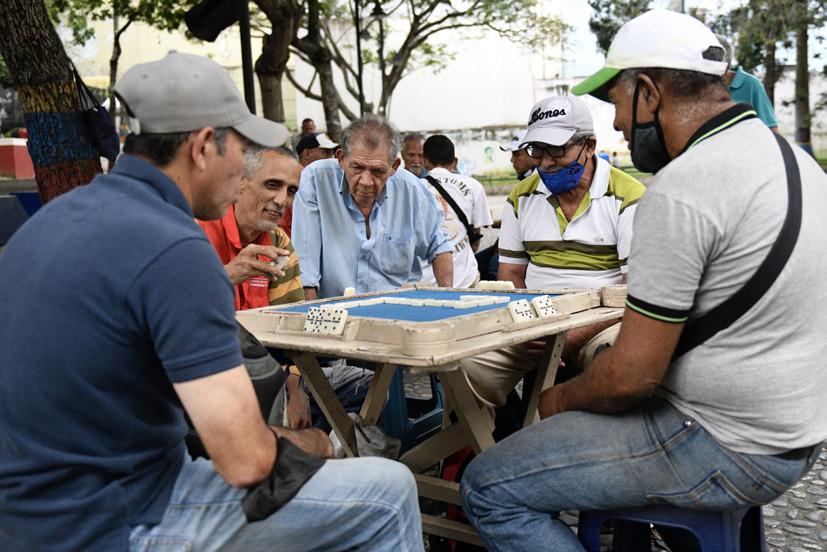

including that of Lina Ron . With her platinum blonde hair, fiery look and revolutionary speeches, she was one of the most famous activists of the radical wing of Chávez's revo lutionary movement. It is surprising that in 2011 she died of a heart attack and not of vio lence, because with her famous slogan “With Chávez, everything, without Chávez, bullets” she was often right in the middle of the firing line. She was so extreme that even Chávez called her “uncontrollable”, while she labelled herself the “ugly face of the revolution”. A man beckons us and opens a low door. We follow him and end up in the bunker from where the resistance fighter worked, a gloomy damp room with yellowed books and maps.
In the 1970s – when Venezuela was booming economically – Caracas grew considerably in size. Because of this growth, the city acted as a magnet for people from the countryside who were looking for a better life. But there was neither room nor money for everyone. A large informal economy arose in which people built their own houses. On both sides of the valley, the slums – the barrios – find their way higher and higher up the steep mountain slopes. According to censuses, about forty percent of the inhabitants of Caracas live here. That's huge. Mini communities have formed in many barrios that live according to their own laws and rules. Those who do not live there and are not tired of life, had better stay away. Nevertheless, we visit one of them, curious about the grave of the driving force of the socialist revolution in Venezuela.

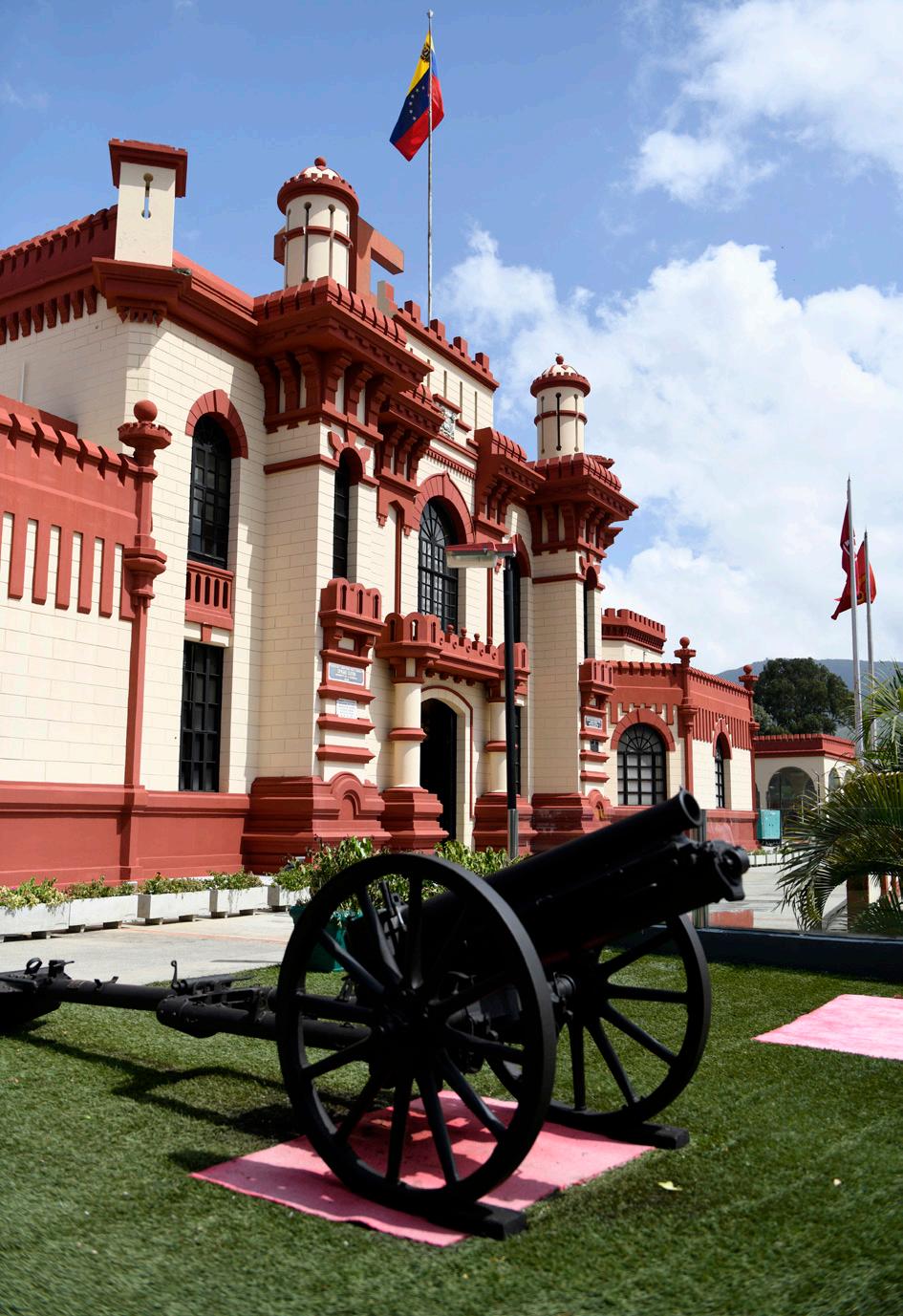
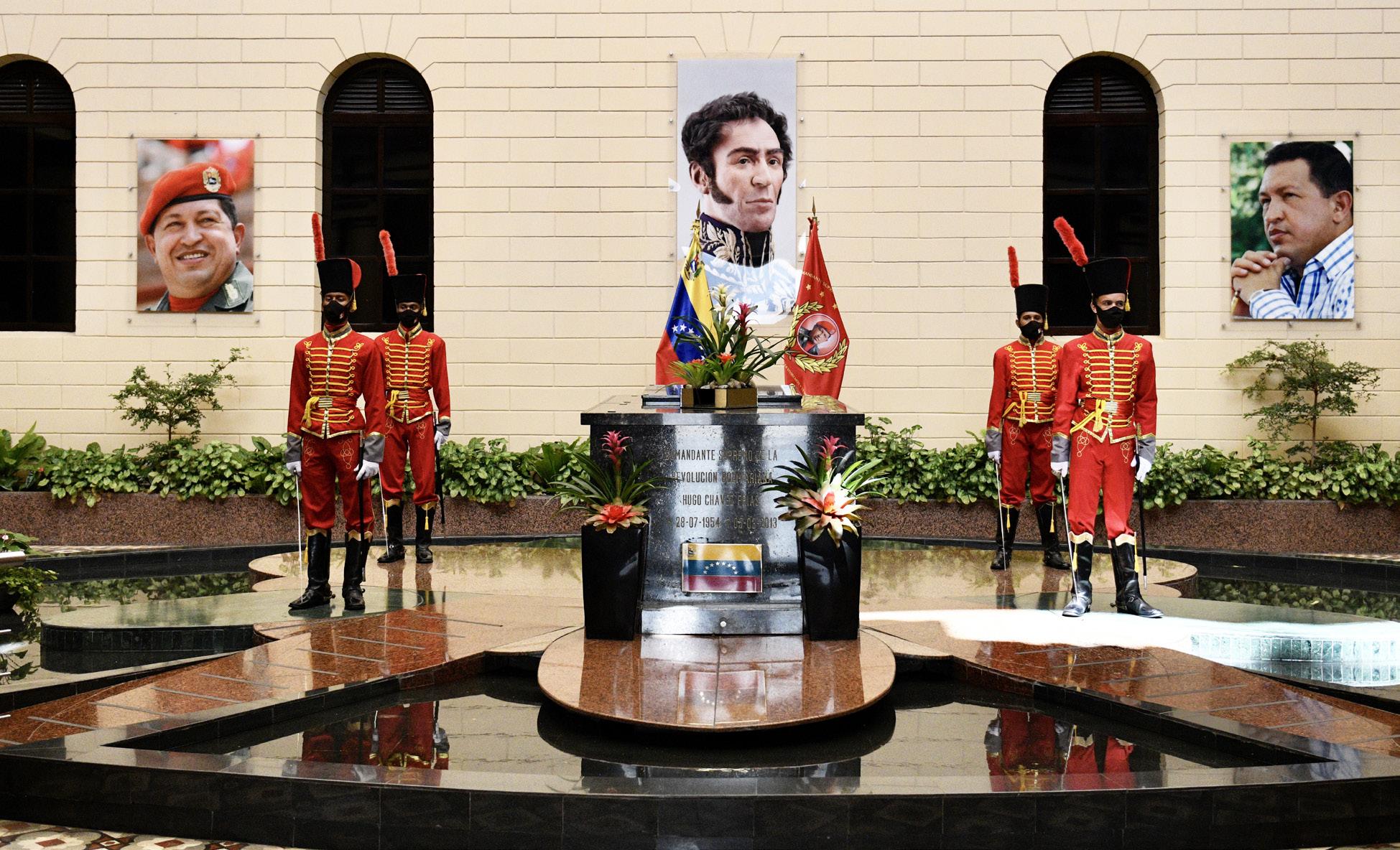
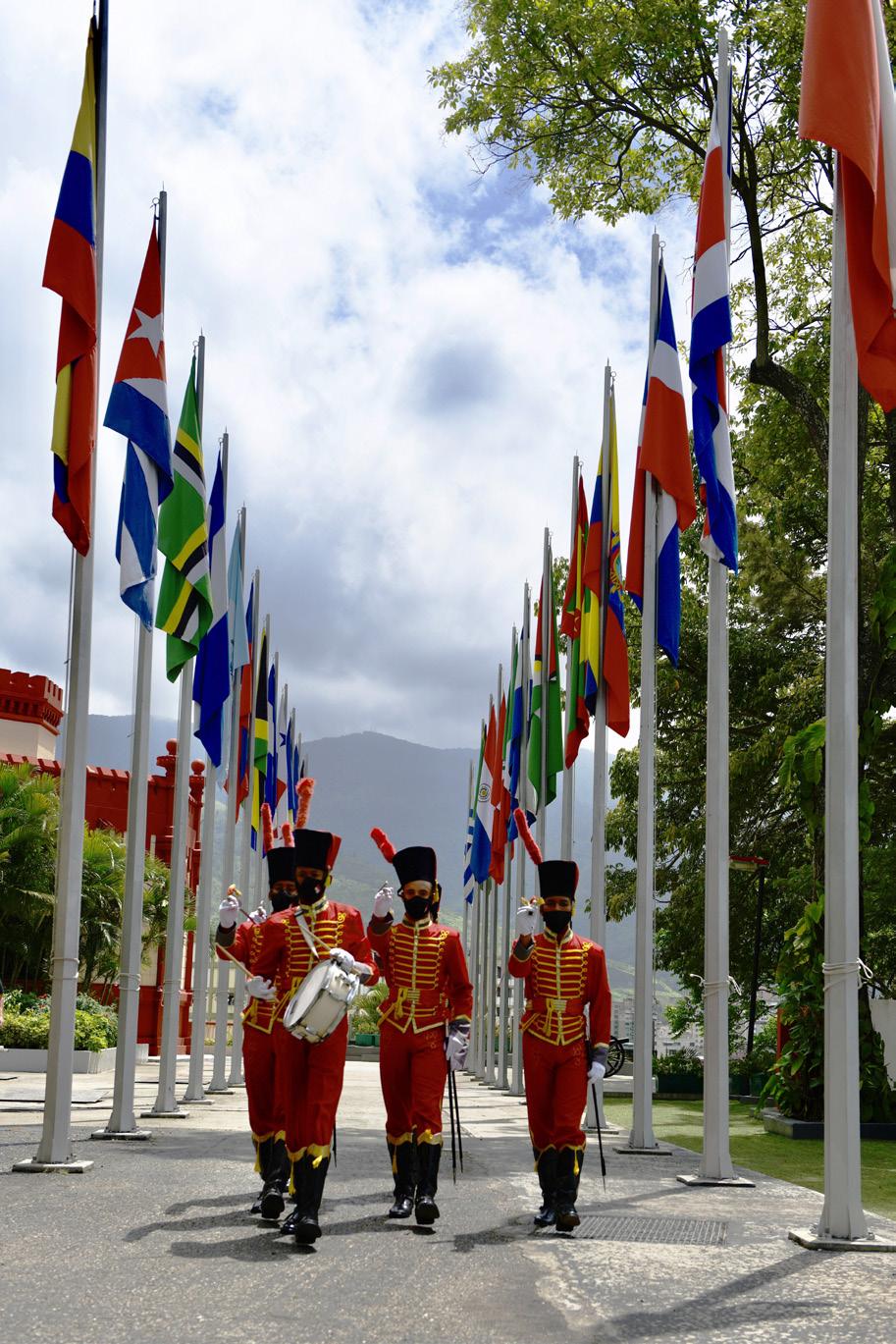
The final resting place of “El Comandante” (°1954-†2013) is above 23 de Enero, the notorious slum from which Chávez attempted to come to power on 4th February 1992 through a coup. The coup failed but marked the beginning of Chávez's political career. The surprisingly beautiful white and red building is part mausoleum, part museum and part fortress. A guide leads us to a room that narrates the legacy of the former president and his socialist-in spired movement. His signature red beret is behind glass. The black granite tomb is permanently guarded by a ceremonial hon our guard of four soldiers. “Commander in Chief of the Bolivarian Revolution” is inscribed on the tomb.
Chávez has been dead for ten years now, but you can still see his image everywhere. Who was that man who managed to win over so many people? In any case, a man with tons of charisma and ambition. At a young age he wrote in his diary: “I hope that one day I may bear responsibility for the entire nation”. In 1988 he came to power. As a country boy of hum ble origins, he effortlessly conquered the hearts of many – mainly poorer – Venezuelans. His great example was Simón Bolivar, the hero who liberated many Latin American coun tries from the yoke of the Spanish coloniser. His theories lay the foundation for Chávez's socialist ideas. To honour his idol, Chávez even changes the name of the country to 'La República Bolivariana de Venezuela'. When he takes office as head of state, he promises to fight poverty and tackle corruption. And he does. He has quite a successful social policy. On the other hand, it also appears that he is strongly interested in strengthening his own power. He wants control over the oil industry, which automatically brings him into conflict with Washington, because many American companies have interests in the Venezuelan oil sector. Chávez constantly assures the population that he will bless Venezuela with an enviable industry, but unfortunately, he does not deliver. When oil prices plummet in the 1980s, he is left empty-handed. In practice, Chávez made Venezuela as much of an eco nomic mess as his godfather Fidel Castro did to Cuba. Despite that mess, the country was in deep mourning when Chávez died of cancer in 2013. For many Venezuelans it was like losing a member of their own family.
Already at a young age
“I hope that one day I may bear responsibility for the entire nation”.
Nicolás Maduro (°1960) was the successor that Chávez himself had put forward. After narrowly winning elections with a majority of 50.7 percent of the vote, Maduro took over. Maduro, however, could only dream of the immense popularity of his predecessor and didn’t have a shred of his charisma. He then took a different tack and pursued his policy with an iron fist. Maduro rules like a dictator. Every form of crit icism is nipped in the bud and opposition people end up in prison. The man also does not come across well abroad, as witnessed by the many international sanctions that keep the country in its grip. For a moment, the tide seemed to turn when Juan Guaidó took on Maduro in the 2019 elections. But Maduro fraudulently took the win and remained in the saddle. Although Guaidó was recognised by fifty countries worldwide as a legitimate head of government, he failed to bring Maduro to his knees. Due to the poor and complex political and socio-economic situation, almost six million Venezuelans have already left the country since 2014. And yet there is some slow improvement, we hear from our contacts in Venezuela. Now that the opposition has been greatly weakened, Maduro is loosening the reins. He again permits foreign currencies to be used and no longer targets the private sector. Of course, whoever opens the tap can close it just as quickly, but at the moment the Venezuelans are seizing the opportunities that arise with both hands and the country is doing a little less badly economically.


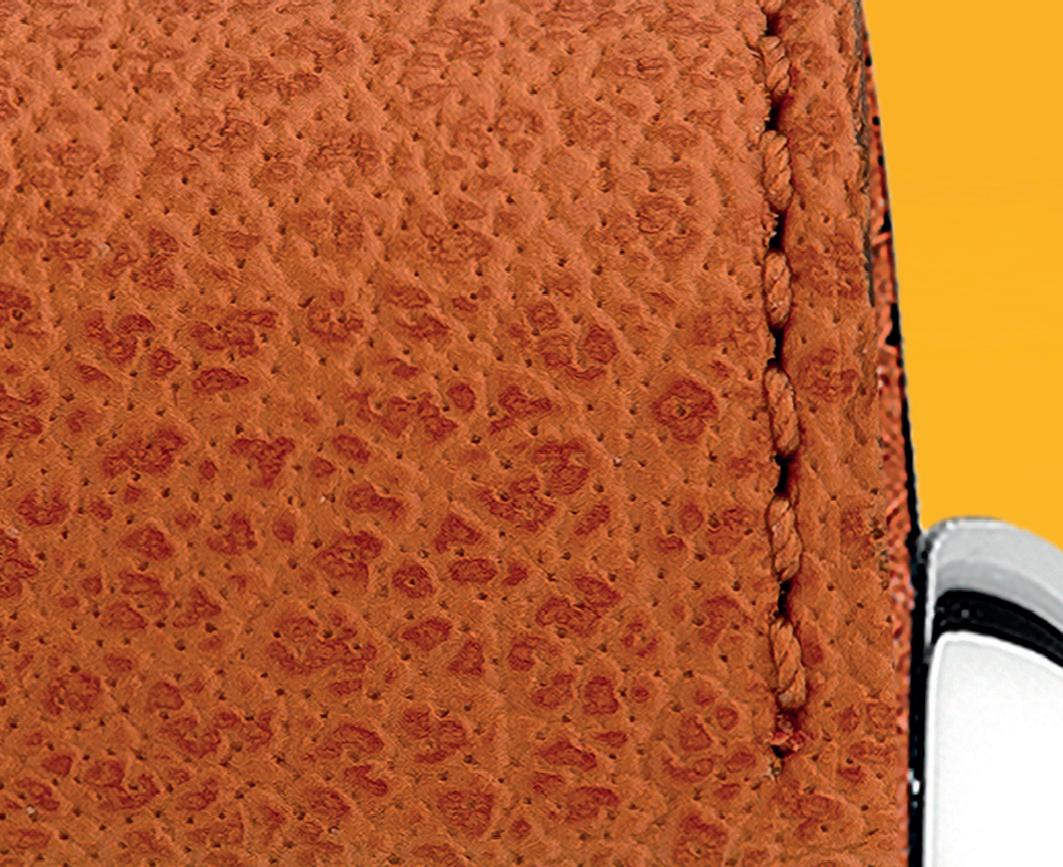

Het geheim van een goed design is dat het trends overstijgt. De Van Esser A-One bevestigt dit. Onze ambassadeurs van de afgelopen 20 jaar hebben daarover nog geen ongelijk gekregen, en die van de volgende 20 jaar ook niet.
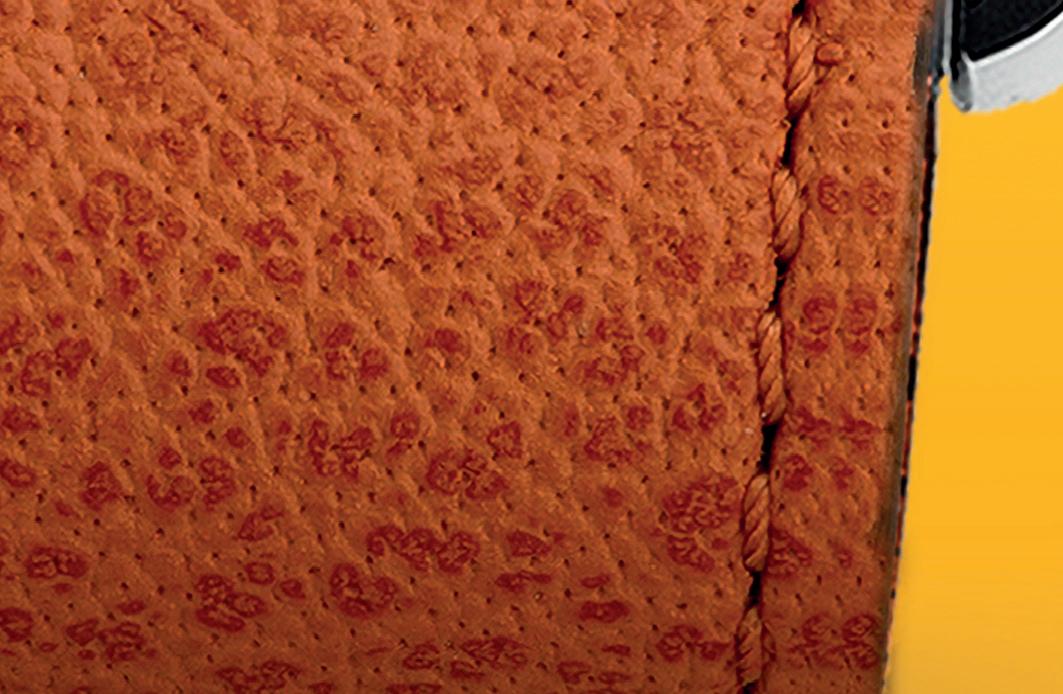

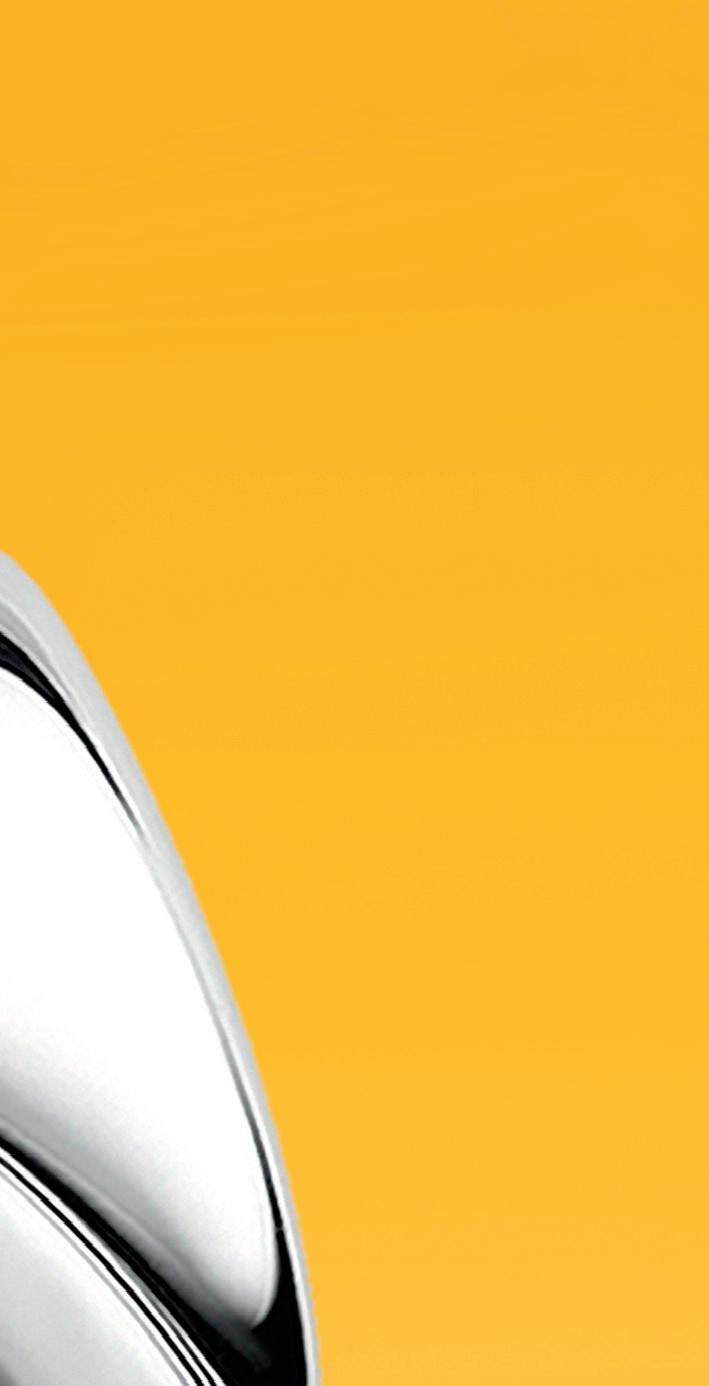


Oordeel zelf op onze website www.vanesser.eu

Fair is fair: the members of the Porsche club are not really suffering as a result of Venezuela's economic malaise. Anyone who can pay 40% extra tax for a luxury car is not exactly short of cash. Like all Porsche drivers, the Venezuelans like to enjoy their car as much as possible. Through their club they can do this with like-minded people, which ensures double driving pleasure. Domingo Olivares is president of the club and has mapped out a promising road trip. About thirty Porsches gather at the starting point. The club members are like a bunch of elated kids. They greet each other enthu siastically and are eager to get their engines roaring. Domingo leads the way in his blue Carrera 4S. We drive onto the Autopista Francisco Fahardo - the highway that runs from east to west through Caracas. To our right looms the Esfera Concorde , an impressive creation by Jésus Soto , one of the great masters of kinetic art. In honour of the city, he created a twelve-metre-high sphere consisting of 1800 copper-coloured rods. The sphere appears to move due to the incidence of light. A fascinating sight.
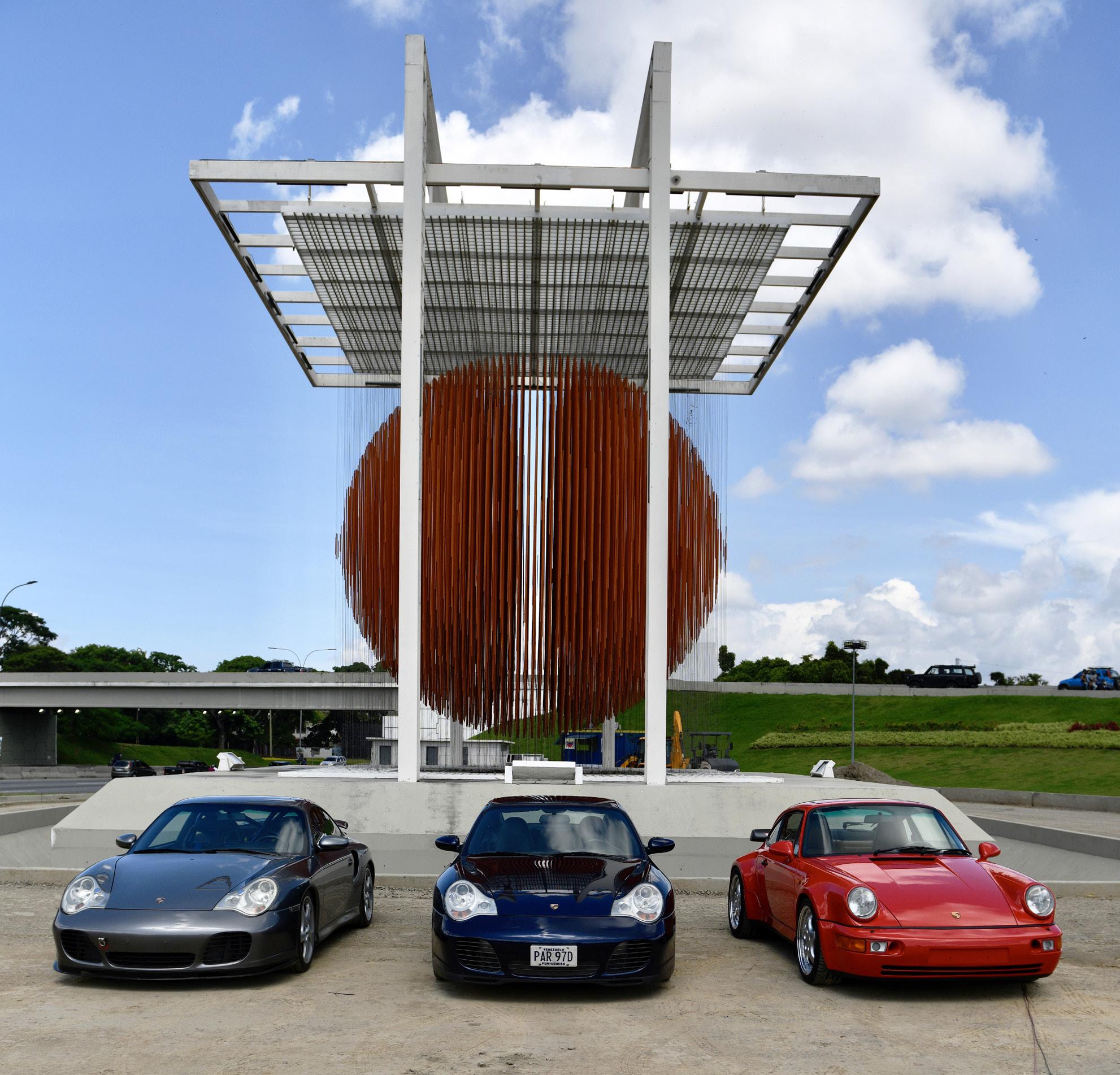
Portugieser Perpetual Calendar. Ref. 5034: How would you like a device that only until the next product generation but will go on performing for centuries? The perpetual calendar in this Portugieser is mechanically programmed and needs virtually no manual adjustment until 2499
and beyond. This smart mechanism is housed in a timelessly beautiful 18-carat white gold wrist watch with a blue dial, whose iconic design will no doubt look every bit as fresh and modern a few hundred years from now as it does today.









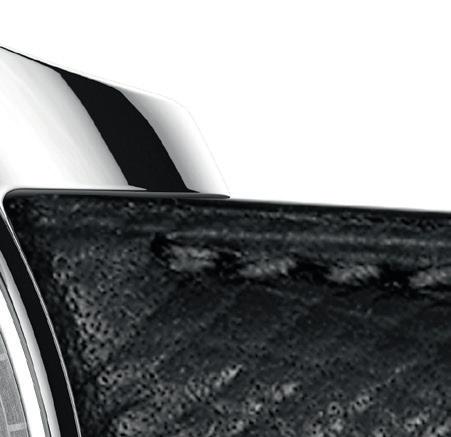
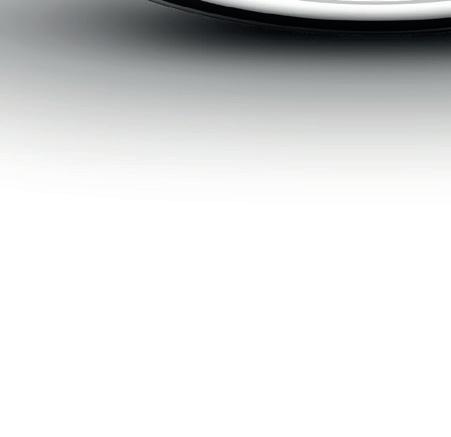





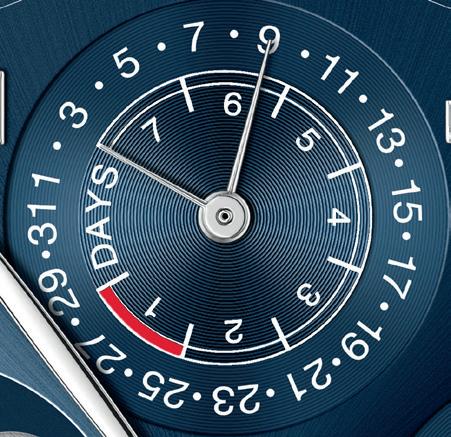

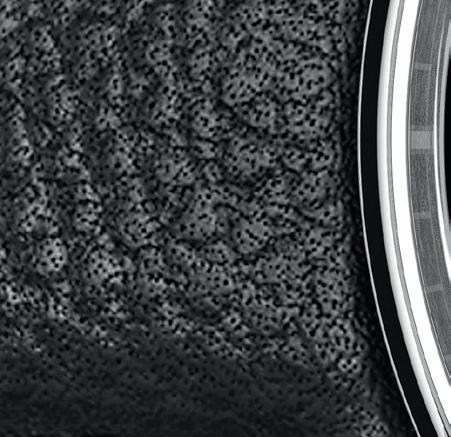








IWC. ENGINEERING BEYOND TIME. SINCE 1868.
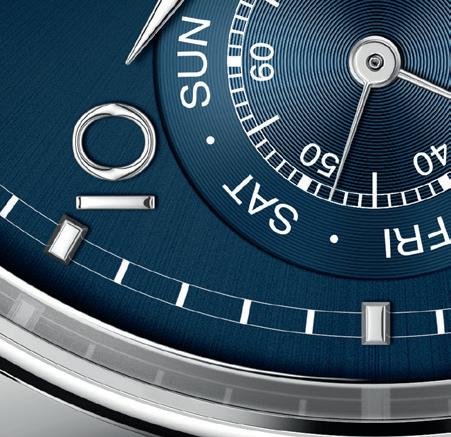
IWC-manufactured 52615 calibre · 7-day power reserve with display · Perpetual calendar · Anti-reflective sapphire-glass · See-through sapphire-glass back · Waterresistant 3 bar · Diameter 44.2 mm


It wasn't until 1964 that a tarmac road came to the village and the Venezuelans discovered a piece of Germany in their own country.
 Colonia Tovar
Colonia Tovar

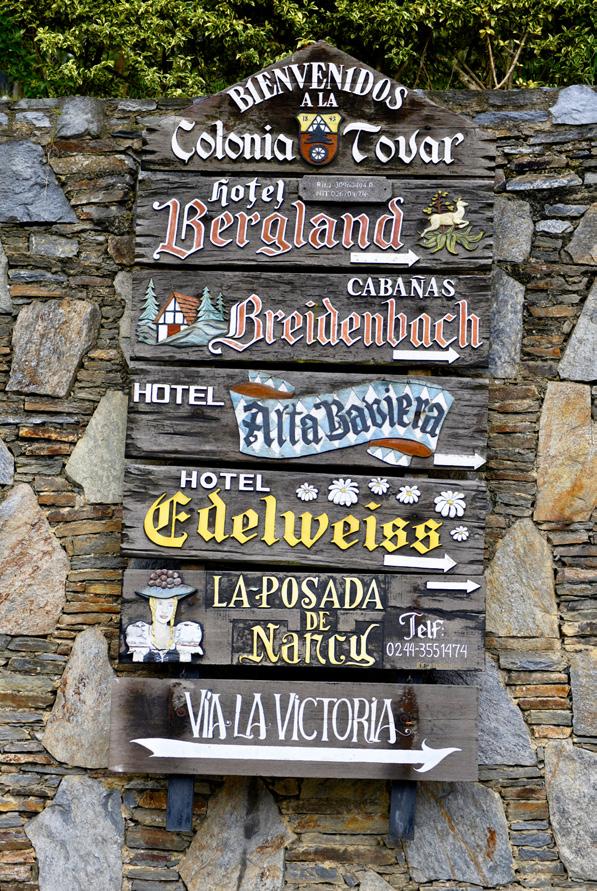
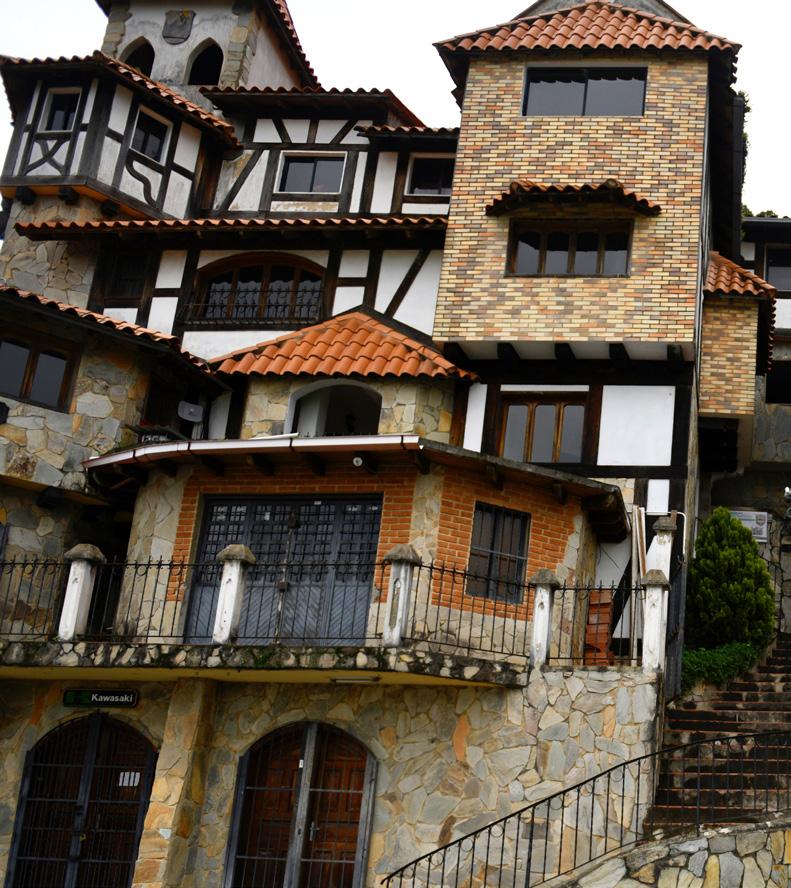
The road winds steadily upwards, the ravines get deeper, and the view gets better and better. After an hour and a half we arrive at our lunch stop. Great is our surprise when we end up in a village that is more German than Germany, with picturesque houses that seem to come straight from the Alps. This is Colonia Tovar , a piece of 19th century Germany in Latin America. Two hundred years ago, German immigrants from the Black Forest - fleeing poverty in their own country - sought refuge in this spot in the Venezuelan mountains. They built houses based on the Schwarzwälder model with white facades and heavy wooden beams, grew fruit and veg etables and brewed German beer. They named their new home Colonia Tovar, after Count Felipe Tovar who made the land available to them. This region still supplies the sweetest strawberries and best apples in the whole country. Until the 1960s, the villagers led a quite isolated existence, so that the morals and customs of the motherland were preserved. It wasn't until 1964 that a tarmac road came to the village and the Venezuelans – with the tourists in their wake – discovered this piece of Germany in their own country. In the restaurants where cuckoo clocks and deer antlers hang on the walls and the waitresses walk around in dirndl dresses, “Jägerschnitzel mit Pommes”, “Eisbein mit Sauerkraut” and “Schwarzwälder Kirschtorte mit Schlagsahne” are on the menu. We are amazed to see how fond the Porsche drivers are of the German specialities. The large portions are consumed effortlessly. Satisfied and sated, the Porsche drivers start their return journey. In the mountains they still drive neatly behind each other so that we can take pictures of the photogenic caravan, but as soon as we drive onto the highway again, the petrolheads are unstoppable. There is no speed limit in Venezuela - or at least not one that any self-respecting Venezuelan adheres to - so the Porschists rev their engines and whiz away.




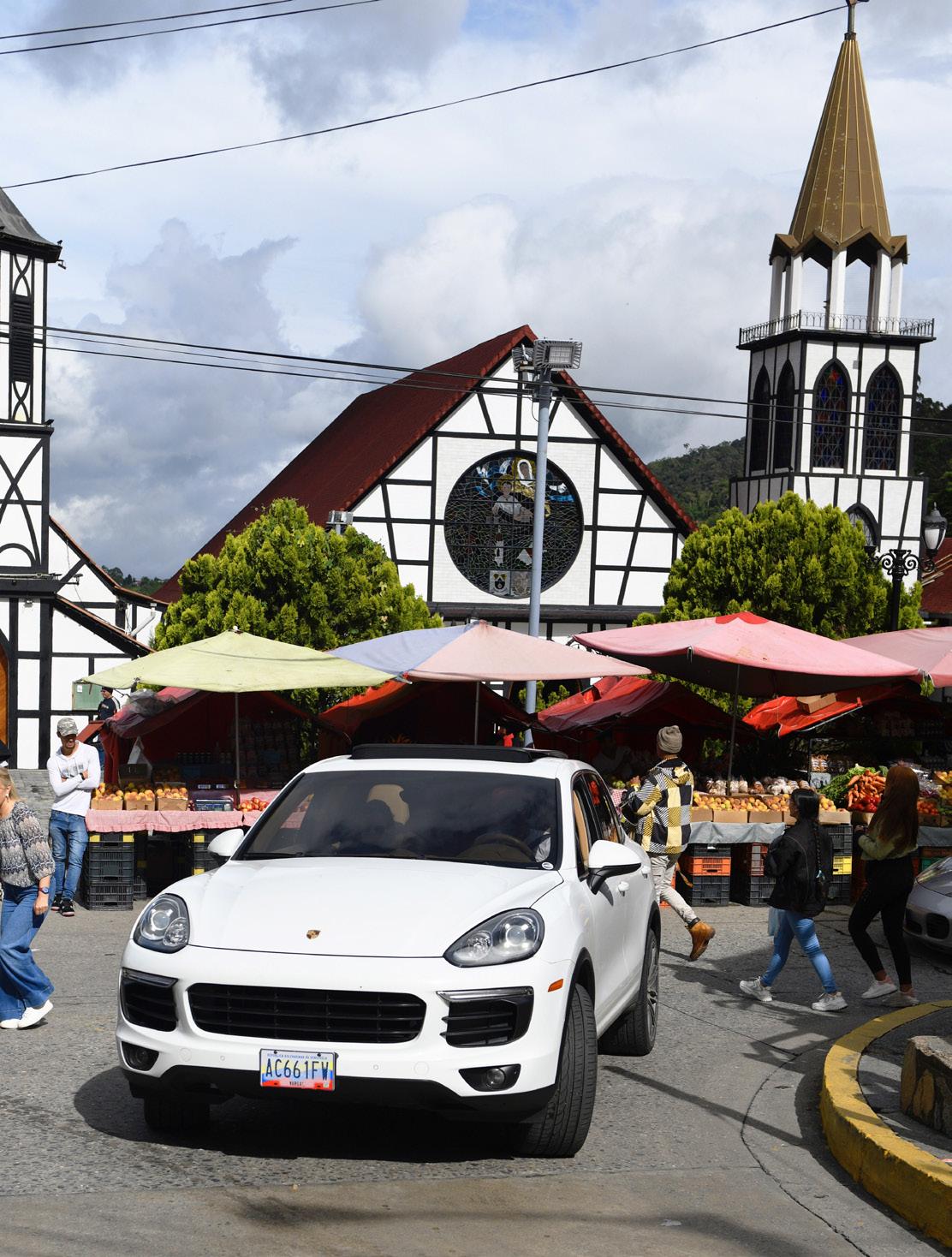

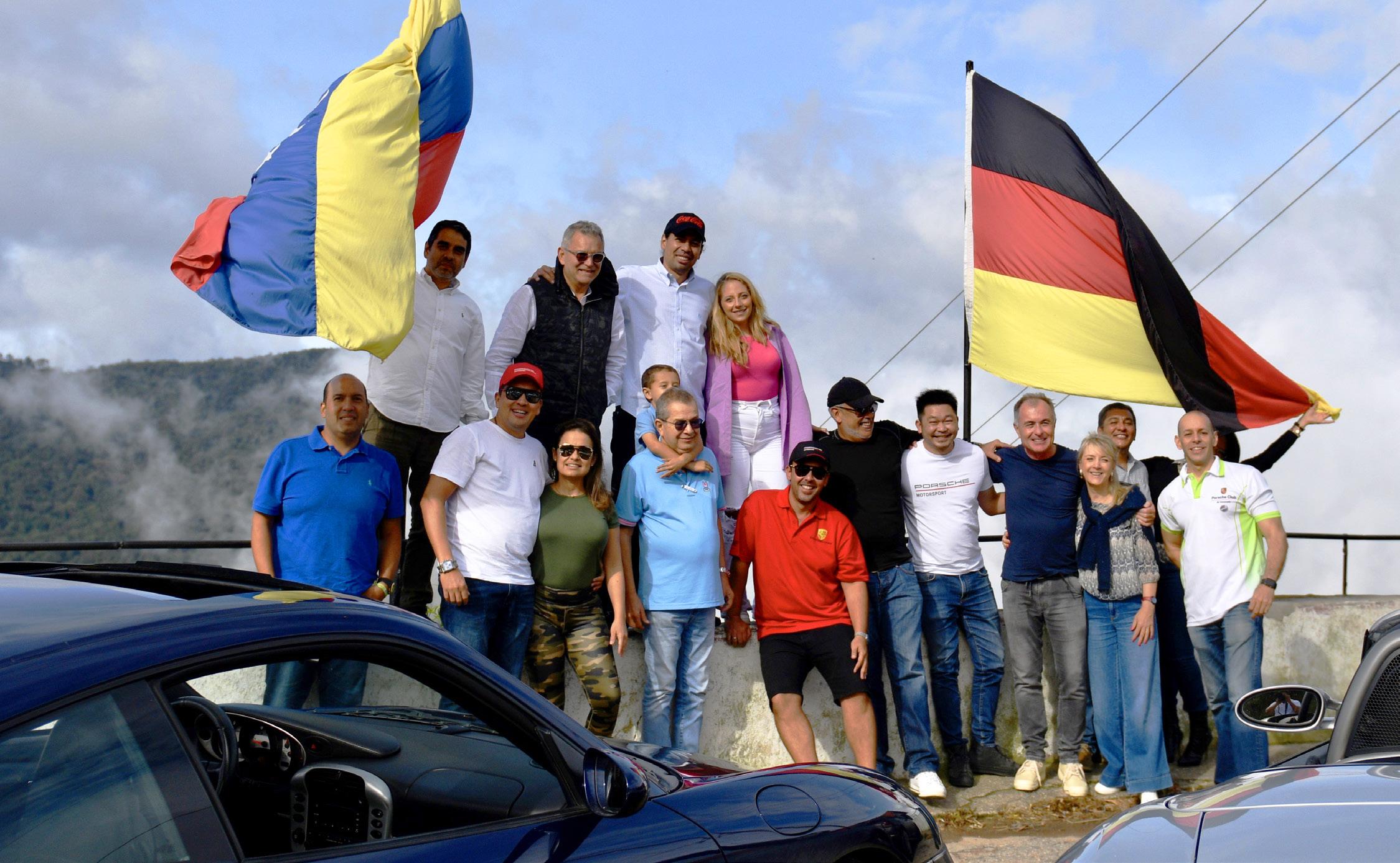

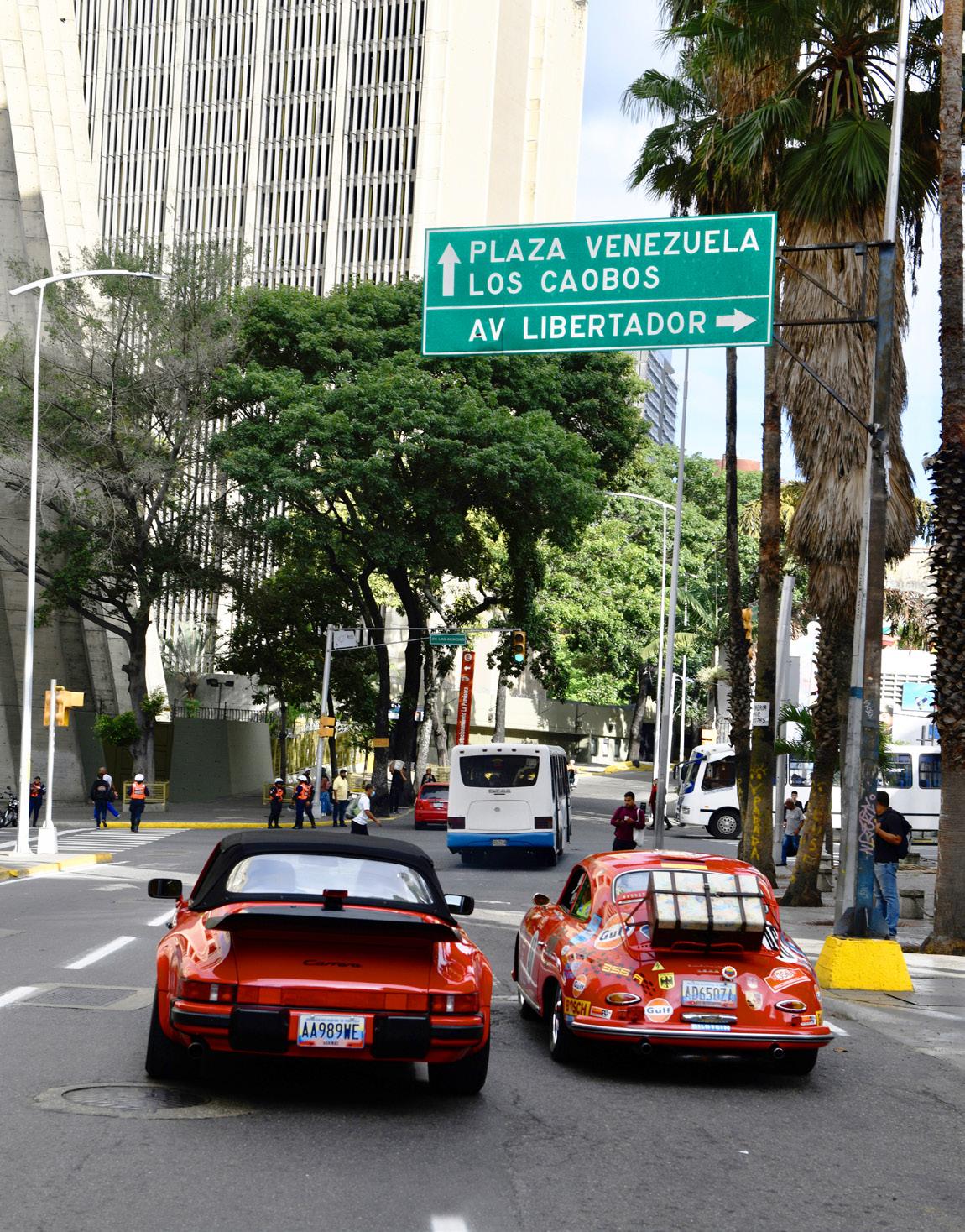

The advantage of knowing people locally is that they take you to places that you otherwise would not have discovered, such as the Hotel Humboldt for example. Standing like a lighthouse on top of Mount Ávila, the hotel is an icon of Venezuelan architecture due to its avant-garde design. From the hotel you have a phenomenal 360-degree view of Caracas, the surrounding mountains and the Caribbean Sea. The driving force behind this remarkable building was architect Tomás Sanabria (°1922-†2008). In 1956 he received permission from the then government under Marcos Pérez Jiménez to build the hotel on the condition that the job was completed in 200 days, something that is almost impossible. But where there's a will, there's a way. Sanabria recruited construction workers from all over Europe. They worked around the clock and actually managed to complete the project in 199 days. On 29 December 1956, Hotel Humboldt opened its doors. The hotel takes its name from the famous German naturalist Alexander von Humboldt (°1769-†1859) who spent a lot of time in Venezuela during his expeditions. The special thing about the hotel is its structure: a round tower, 60 meters high with 19 floors. The 70 rooms all have fantastic views. There are restaurants, lounges, an indoor swimming pool, a dance hall with a revolving floor and even a private cable car that leads from the bottom of the mountain to the entrance and which only hotel guests and invited guests are allowed to use.
The hotel was the scene of lavish dinners, extravagant parties and dances until the early hours. Unfortunately, the hotel only had a few glory years. In the 1980s, after several takeovers and renovations, it was completely left to its own devices. Until, in 2012, a team of specialists led by a former Sanabria assistant embarked on a large-scale renovation project to completely restore the building to its original state, including the interior with the same colour palette and furniture of yesteryear, with the only difference being the addition of modern home automation and bathrooms adapted to today's standards. The ambitious project took four years to complete, but the result is a master piece that, due to its exceptional location and interior, has no equal anywhere in the world. It is a legacy of the last century; a time capsule that transports guests to the fifties. Whether the weather is good or bad, you will always wake up here with your head in the clouds.
Hotel Humboldt is a legacy of the last century; a time capsule that transports guests to the fifties.
 Hotel Humboldt, Caracas
Hotel Humboldt, Caracas

About 140 kilometres north of Caracas lies the archipelago of Los Roques. It consists of around 300 coral islands. In a circle with a radius of about thirty kilometres, white dots interrupt the end less blue palette of the sea. Only fifty of the islands have a name and only one is inhabited: Gran Roque . This is also the island on which we land. From the small plane we step straight onto the beach. You won't find pavement anywhere on Los Roques outside of the runway. The three streets which Gran Roque can call its own are dirt roads. A porter collects our luggage and takes us to our accommodation. Los Roques is a protected natural area where the law of nature and tranquility reign. That is why there are only small-scale posadas , charming hostels where we immediately fraternise with the other guests.
As a visitor to Gran Roque, there are two ways you can spend the day: either you stay on the island to stroll around, read or observe the fishermen, or you go to one of the many other islands. Of course we choose the second. After some discussion we decide to go to Boca de Sebastopol . In a speedboat we rush to paradise. We arrive there with a well-stocked cool box, two beach chairs, a large parasol and the promise that they will pick us up at four in the afternoon. And here we are: the two of us on a deserted island. Only one place for sanitary facilities: the sea. We fill our day with lazing, swimming, snorkelling and applying sunscreen. Plenty of sunscreen because the sun is relentless. As a pastime we think about what we would do if we weren't picked up. You never know, right? But at exactly four o'clock we hear the engine of an approaching boat. “¿Has tenido un buen día?”, is the immediate question. Absolutely!
The next day the choice is more difficult because we only have two days on Los Roques and there are so many islands to discover. We decide on Cayo de Agua , said to be the most beautiful island of them all with a narrow strip of sand connecting the two parts of the island. We have now completely adapted to the rhythm of this blissful dolce far niente life on a pearly white beach with a turquoise sea at our feet. During lunch we are joined by a group of seagulls. Quietly, in turn, they eat from our hand. They are not at all as greedy as their counterparts on the Belgian coast. It's like an unspoken pact: good food for us, good food for them.
We are sad to leave Los Roques. We say goodbye to the staff of the two posadas where we stayed – Posada Mediteraneo and Posada de Gotera , both equally good – and shuffle to the airport. Now we just need to wipe the sand off our feet, and we can board the plane.
Only fifty of the 300 islands of Los Roqes have a name and only one is inhabited.


Los Roques is pure and authentic and has taught us what Curaçao, Bonaire and other Caribbean islands must have looked like before mass tourism arrived. Isla de Margerita is a different story. This is a party island where thousands of tourists come every year to enjoy the sun, sea and beach. The island is quite large. About 1,080 km², slightly larger than neighbouring Curaçao, and therefore of a completely differ ent order than Los Roques. In the high season you will see scenes that we mainly know from the Spanish Costas and Greek islands. There's nothing wrong with that, it just depends on what you're looking for. The travel agency knows that we are looking for special locations and has selected two of the most beautiful hotels on the island for us: Hotel Boutique & Spa Maloka and Hotel Vientos del Caribe . The first is located on the east coast of the island and has remarkable architec ture with a checkerboard of small pools connected by stone paths. Especially in the evening, when the water is beautifully lit, the special concept is a feast for the eyes.

A daytrip takes us to the village of Manzanillo where we see a lot of activity on the beach. The sardine fishermen come in and that makes for a grand spectacle. They will have set sail at four in the morning and are now bringing their loot home. Their colourful boats are brimming with small silver fish that sparkle in the sun. Hundreds of pelicans and frigate birds are in time for lunch and take as much fish as they can. The men work quickly. They expertly load the sardines into black bins and bring them ashore, where the women load them into waiting refrigerated trucks. It is fascinating to see whole families at work here. Even little five-year-olds are quick to shove logs under the hull of the boats so that they can be towed ashore. Children here can swim as soon as they can walk. The sea is their playground, their school and, in all likelihood, their workplace later on.

de

Isla
Margerita is a party island where thousands of tourists come every year to enjoy the sun, sea and beach.
On the south side of the island is one of the most beautiful beaches of Isla de Margerita: El Jacque, the place par excellence in Venezuela for kitesurfing. Out at sea, the acrobats show off their skills. They play with the waves and the wind like it's nothing. The owner of Hotel Vientos del Caribe is also an avid kite surfer. Paul is an American who has travelled all over the world and lost his heart to this piece of sea a few years ago. He said goodbye to the internet world, made an offer for a beautiful piece of land five minutes from the beach and built an extraordinary, exclusive fivestar oasis for like-minded people. Whoever comes here is welcomed as a friend and leaves with the firm intention to return soon.

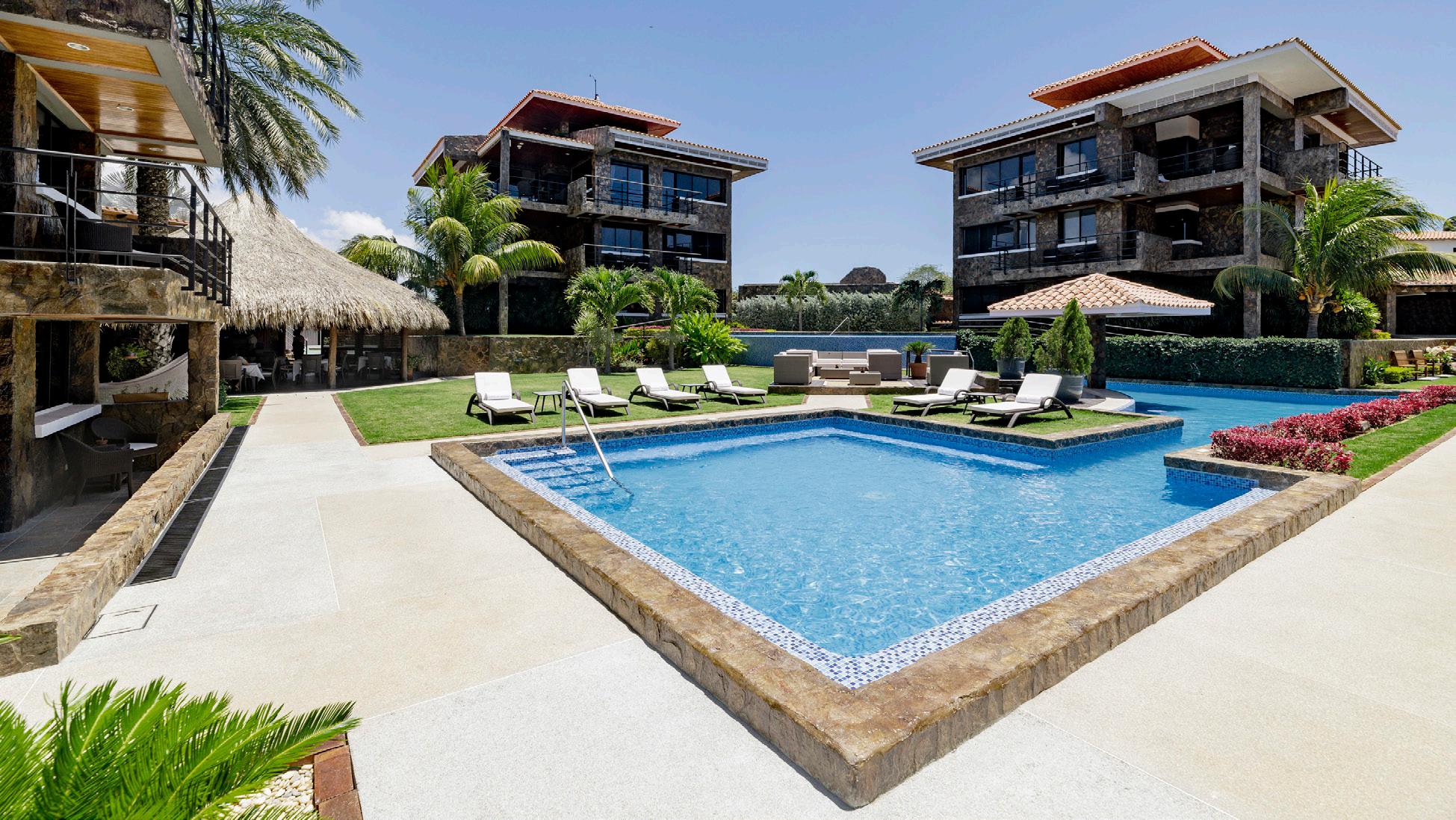

El Jacque beach on Isla de Margerita is the place par excellence in Venezuela for kitesurfing.Hotel Vientos del Caribe
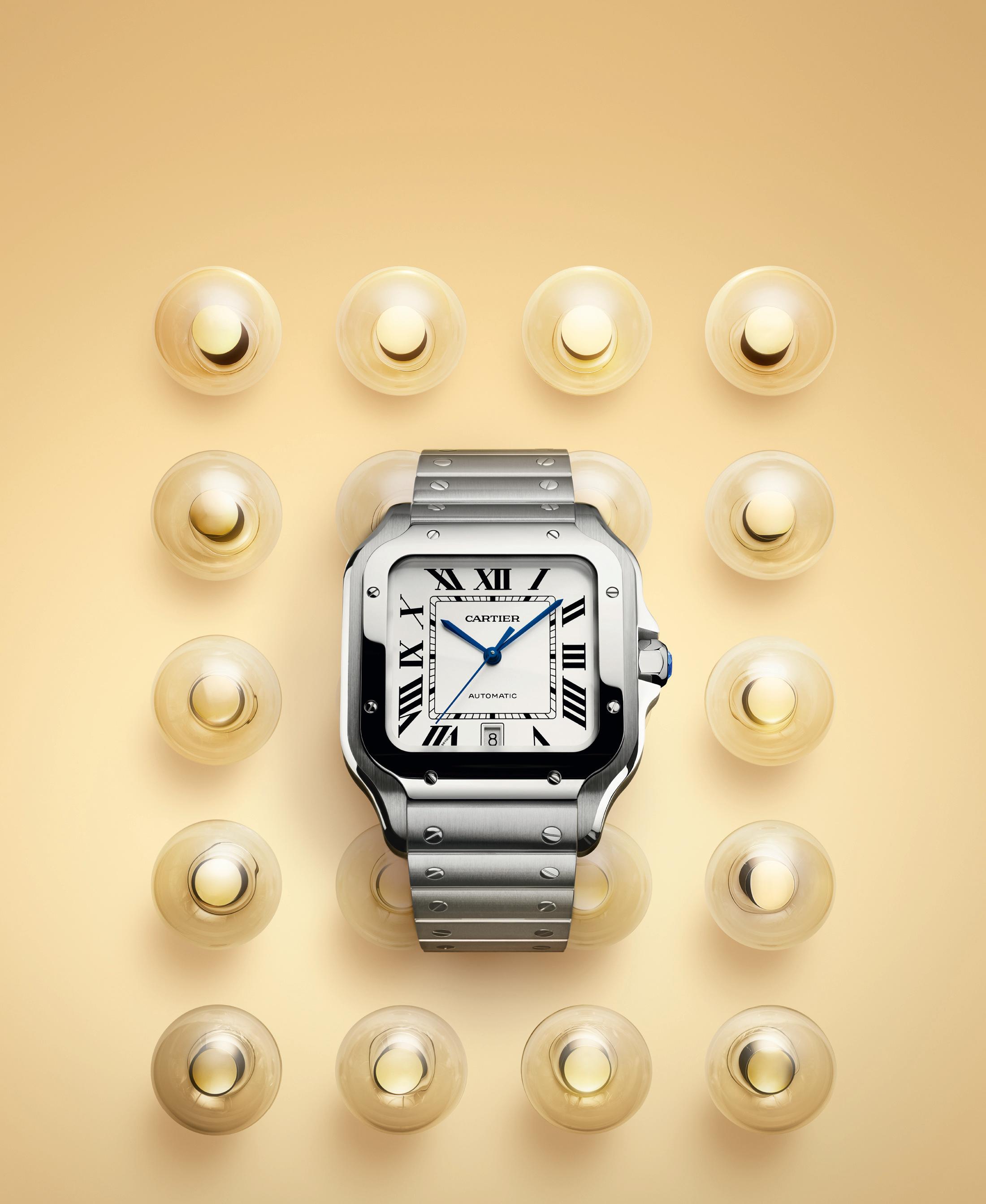
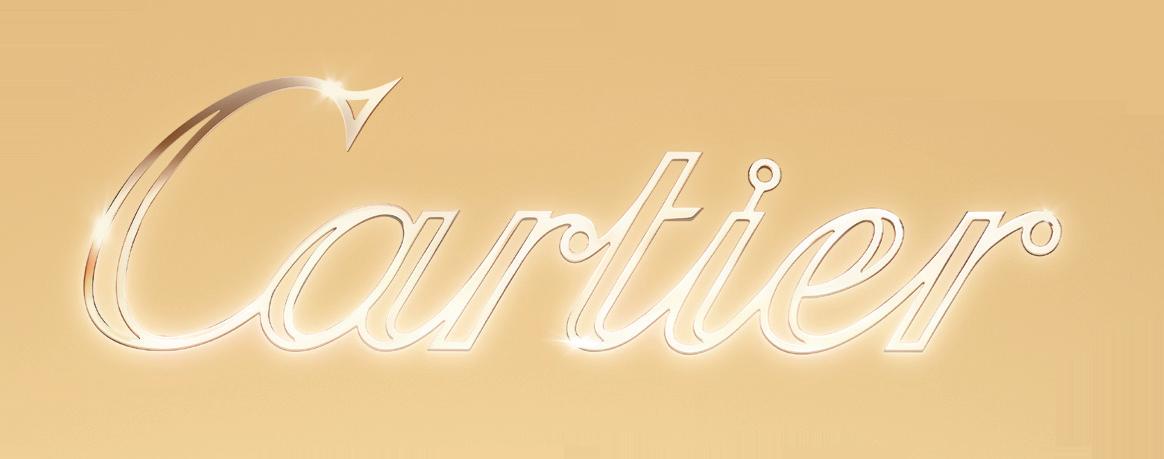

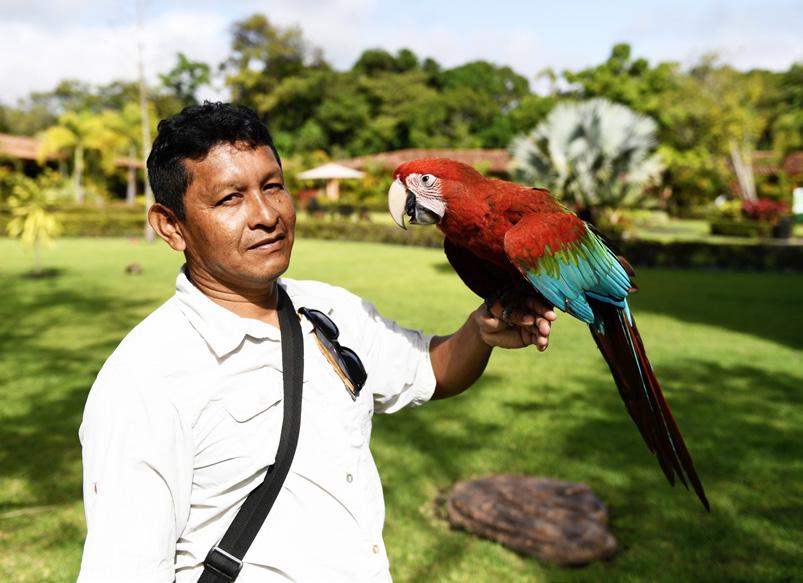
In the southeast of Venezuela is the Canaima National Park - with 30,000 km² one of the largest national parks in the world. This intriguing piece of natural beauty with a myriad of jungle rivers in impenetrable rainforests, mysterious table mountains and, as icing on the cake, the highest waterfall in the world, is known as one of the most impressive natural areas in the world. And yet this park - unlike most other national parks that are visited annually - receives only few visitors. This may be because it is difficult to reach and not really set up for a lot of tourism. You can only get there by plane. There is a flight out on Sunday and a flight back on Thursday, which means we have four full days to discover this special area. The starting point of each visit is the village of Canaima . It is located in the middle of the wilderness and near the airstrip. This is also where our home for the next few days is located: the Ara Merú Lodge , a camp with 21 comfortable cottages beautifully situated on the edge of a palm-fringed lake. The water of the lake is full of tannin, which gives it a beautiful rust-red colour and the beach has a light pink tint. The sounds of the jungle are music to our ears.
We meet Jorge, the guide who will accompany us on our explorations. Born and raised in Canaima, Jorge belongs to the Pemón Indians who have lived here for centuries. The Pemón are rather small in stature and sinewy, with blueblack hair and an auburn complexion. Jorge speaks perfect English. In a hollowed-out tree trunk with an outboard motor - the typical means of transport of the Pemón - we sail to the Salto Sapo and the Salto Hacha , two of the seven waterfalls near Canaima. We can walk behind the falls under a natural overhang of rocks. We do it one step at a time, because one wrong move and we’ll tumble down twenty metres.
Now in store.







De premium leesbril van Porsche Design wordt gekenmerkt door een uitstekend design en geavanceerde technologie met een perfecte afwerking en een hoogwaardige laserafwerking. Innovatieve materialen en vakmanschap vormen de basis van het perfecte leesgereedschap.



The next day the highlight of our trip is the order of the day: the Salto Ángel or Angel Falls The waterfall owes its name to the American pilot Jimmy Angel who crashed his plane on top of the Auyantepui in 1937 and thus discovered the waterfall. Miraculously, he managed to get down and find help so he could retell his adventure. With a height of 979 meters, the waterfall is sixteen times higher than Niagara Falls and nine times deeper than Victoria Falls. To get to the foot of the waterfall, a long journey awaits us, partly by boat, partly on foot. We leave at four o'clock, before dawn. It has poured all night and even now the rain is pouring down from the sky.
After many hours of sailing, the waterfall comes into sight. Now the hardest part of the tour begins: a steep one-hour climb through the rainforest to the Mirador Laime viewpoint. There is no paved path, so we toil from rock to rock trying to get as much grip as possi ble on the slippery stones until we arrive – huffing and puffing – at the lookout point. A colossal table mountain towers above us. With immense force, broad white strands thun der down the steep rock wall for hundreds of metres. The waterfall consists of two levels and the lower one makes a deep free fall of 807 meters. We had been cursing the rain, but now we are thankful for it because the waterfall is at its strongest and the sight is very spectacular. The natural wonder gives us goosebumps. We know that we are experiencing something special because despite the fame of the waterfall, few people make it here.
The return journey goes downstream and therefore a lot faster. Sometimes it is even a bit too turbulent, but the skipper is agile and knows how to master the many rapids. The countless table mountains - tepuis in the Pemón language - are mighty, natural fortresses. Red-brown, robust blocks, with ravines and caves worn by erosion, remnants of the oldest sandstone formation in the world, dating back to the time when Africa and South America were connected. That is about two billion years ago. From below the tops seem bare, but nothing could be further from the truth. A unique ecosystem prevails on the old rain-soaked highlands. Because the table mountains are completely isolated, ninety-eight percent of the plants that grow on the plateaus are found nowhere else in the world. Perhaps it is the fauna and flora from before the flood, from before a meteorite wiped out the dinosaurs. Or, as the Cuban writer Alejo Carpentier put it: “Plants that fled from man in the beginning, to hide here in the last valleys of prehistoric times.” It is strange that in a time of expeditions to the moon and Mars, scientists still don’t understand how this ecosystem works. It is not surprising that Sir Arthur Conan-Doyle used this area as inspiration for his famous adventure novel “The Lost World”, which in turn gave rise to the Jurassic Park films.

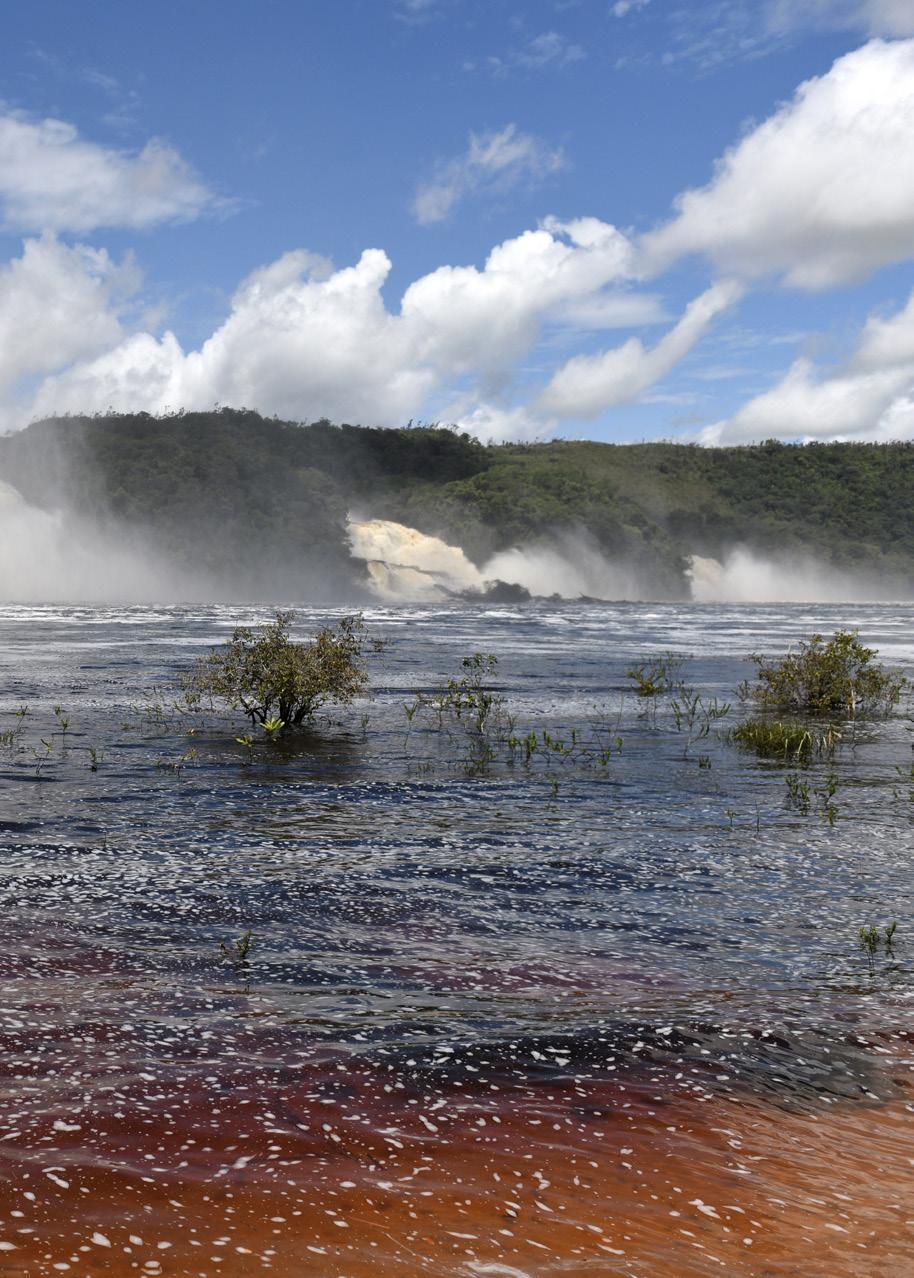
Canaima National Park is so difficult to access that it gets very few visitors despite its beauty.
Speaking of peaks and troughs and absolutely without wanting to be sexist: when it comes to beauty, Venezuelan women come top of the list. Literally too, by the way, if you look at the many beauty pageants they win. No other country has as many Miss World and Miss Universe titles as Venezuela. The pretty Latinas with their beautiful cafe con leche complexion are just about the vainest women in the world and love to show off their curves, whether or not they have been enhanced by the scalpel of a handy surgeon. Boob and nose jobs are commonplace in Venezuela and injecting the buttocks is also a sought-after pro cedure. And you have to flaunt what you've got, every Venezuelan woman reasons, resulting in dizzying décolletés, provocative dresses and tight tops. But not every beauty has been tinkered with. Gabriela, a ravishing vision and owner of the lodge where we are staying, is completely natural. Or to put it in Instagram terms: “no fillers, no filters”. She is also a professional fashion model. With her in front of the lens, taking beautiful photos is not difficult.

Uit de exclusieve SLAETS Atelier collectie, een handgemaakte ring in 18kt witgoud met diamanten en een prachtige muntgroene toermalijn van uitzonderlijke kwaliteit.


NIEUWE LOCATIE LEYSSTRAAT 1, 2000 ANTWERPEN - 03/213 50 80
SCHUTTERSHOFSTRAAT 30, 2000 ANTWERPEN - 03/226 41 44
If you stay in a lodge with the same people for four days and go on excursions together, you will automatically get to know each other. And with Venezuelans that goes very quickly because they love nothing more than making contacts, regardless of the language barrier. Throughout our journey we have noticed how nice these people are. They are cheerful, full of life and exuberant. Being silent is not natural for the Venezuelans. They talk endlessly, joke, laugh, sing, party and if possible - and for a Venezuelan it is always possible - there is dancing. “Yes, the regime is gripping us tight, yes, life is difficult for many, yes, the future is uncertain, but we will not let that ruin our day” is the motto of most Venezuelans. We consider it a life lesson.
Despite the many difficulties, Venezuelans remain themselves: eternally optimistic, cheerful and exuberant.
Venezuela is known as an extremely dangerous country, but we didn't notice that and at no point did we feel unsafe. Although we were well guided by the members of the Porsche club and our local guides, we also walked around in the barrios without any problem. Everyone knows that the country is not doing well at the moment. There is a lot of poverty, and the Venezuelan people just have to manage. Equality for all? That is hard to find. But the Venezuelans bear their fate with great courage and an unassailable optimism. The splendour of nature blew us away. From the pristine beaches in Los Roques and Isla de Margerita to the table mountains of the Canaima region and the mighty Salto Ángel. Venezuela is definitely a country with enormous potential. Now all that remains is to find the right people to convert this into a sound tourism policy. ♦
With thanks to :
- Domingo Olivares, President Porsche Club Venezuela
- Inam Mattar & José Pereira, our local travel agents in Caracas
- Juan Carlos, Director Renaissance Caracas la Castellana Hotel, Caracas
- Posadas Mediterráneo and La Gotera, Los Roques
- Maloka Hotel, Isla de Margerita
- Paul Caswell, President Hotel Vientos del Caribe, Isla de Margarita
- Campamento Ara Merú, Canaima
- Jorge Abati, our guide in the Canaima National Park
- Gabriela Dias, model Venezuela
- Vera Van Steenvoort, Advalorem Travel Architect
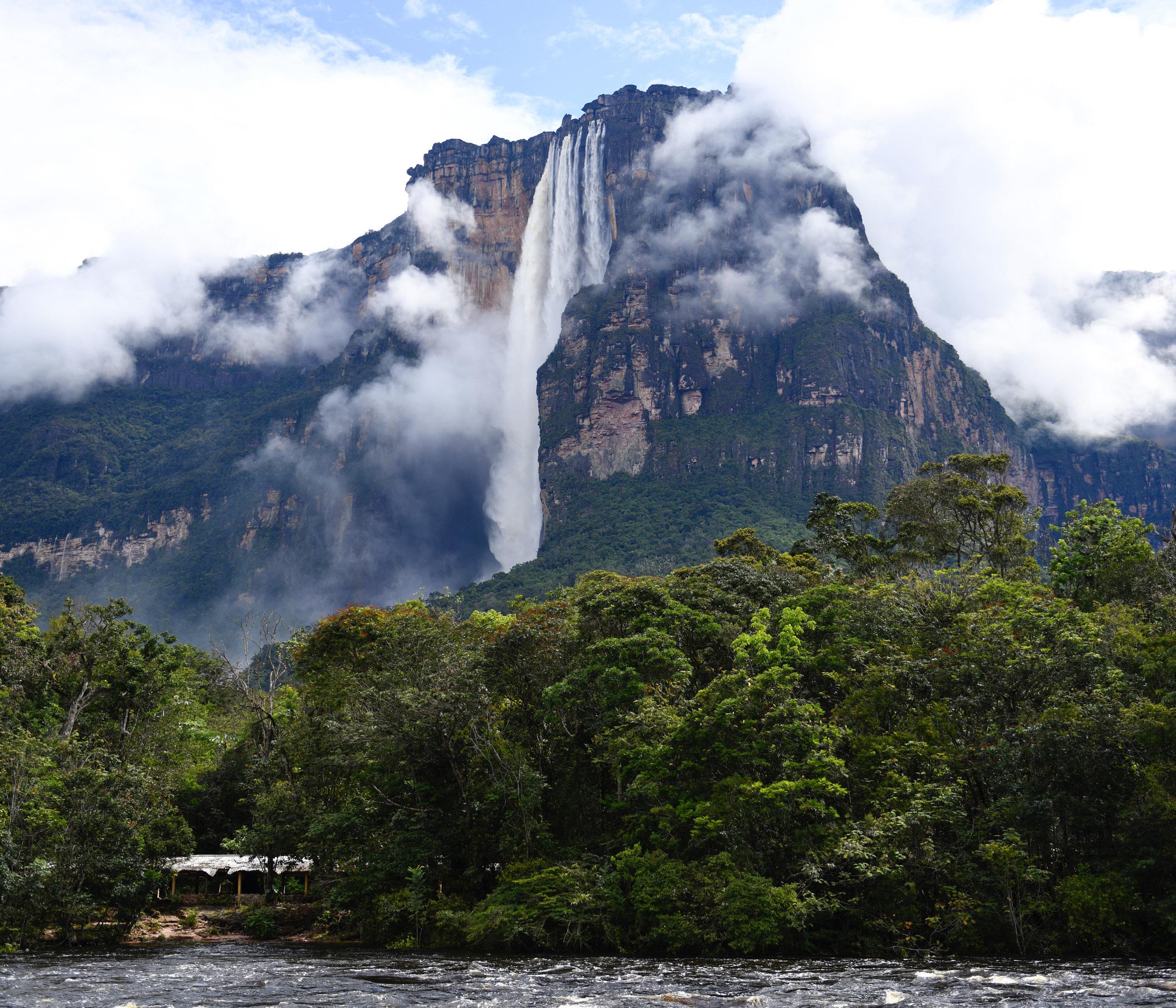

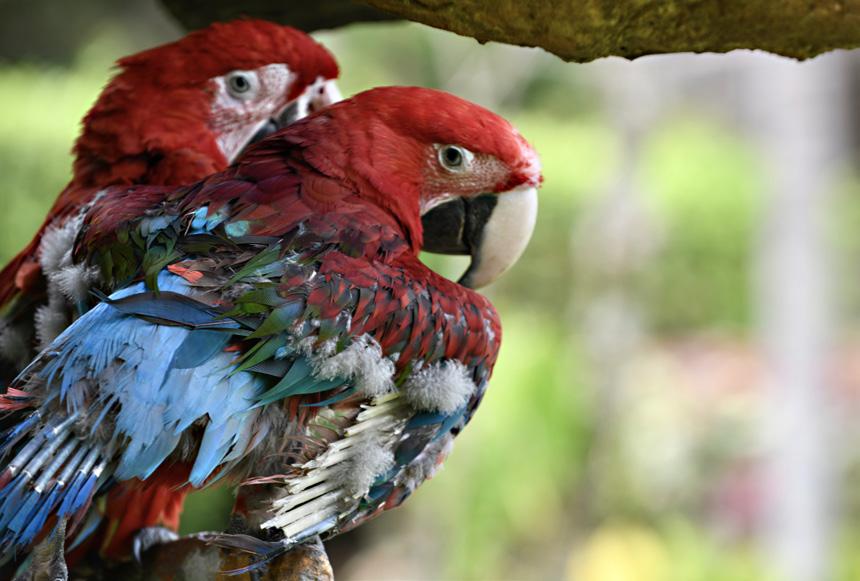
President of one of the oldest Porsche clubs in the world. e make use of the lunch break during the road trip to Colonia Tovar to chat with Domingo Olivares. Domingo is a Porsche enthusiast at heart and president of the Porsche Club in Venezuela, one of the oldest Porsche clubs in the world. To find out that Venezuela has had a Porsche club for seventy years was quite a surprise.
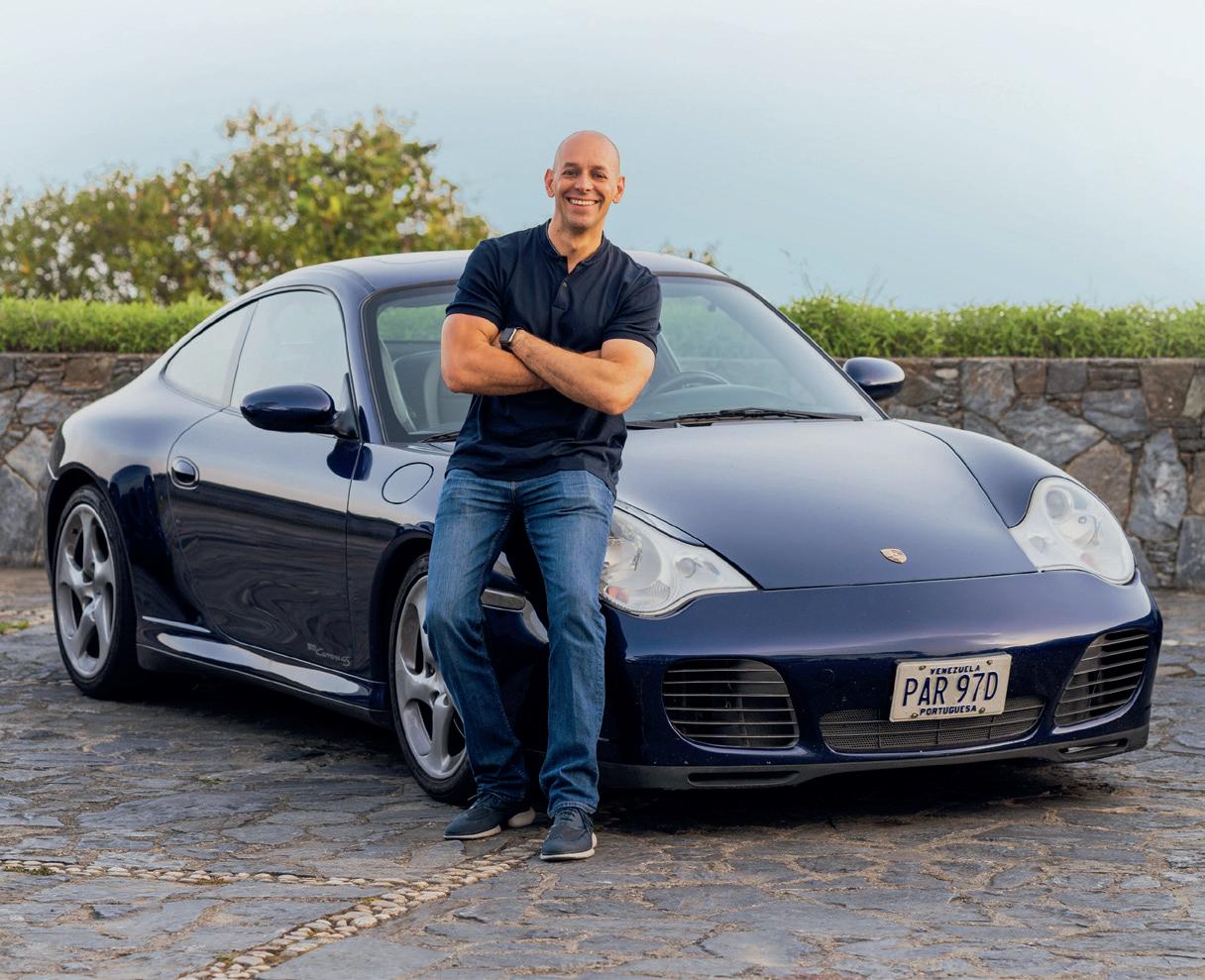
Domingo, what do you do professionally?
I work in the communications sector. I started my company Innovating Advertising while I was still a student. That was in 1996. I am proud to say that I am a pioneer in Venezuela when it comes to digital printing technologies. I mainly work B2B. Customers can contact us for both a simple banner as well as for a complete marketing campaign. In addi tion, since 2016 I also manage a bus company. It is a family business, founded by my grandparents. My brothers who worked in the company gave up and gave me the keys, so to speak, with the simple message: do what you want with it. Do you want to close the company? Fine. Do you want to continue? Also fine. It was the latter. I know my grandpar ents started it from scratch and worked hard all the time. I couldn't bring myself to abandon their many years of work.
To what extent does the government control your professional activities?
To a large extent. Working in Venezuela is not easy given the strict regulations and many measures. In my marketing company I am still quite free, but in the transport sector there is a lot of interfer ence because of course I compete with the national bus companies. The government determines the pricing. I have to admit that in the last few years I have changed my way of thinking. Before that I was very radical. I was twice asked to print a Maduro campaign and I politely declined twice, but really you are just creating problems for yourself. Now I think: idiot. If I had said yes, I might have had thirty Porsches by now. (laughs) No, it's not about the money for me, but it is true that as a businessman in Venezuela you have to find the right balance if you want to survive. Maybe some things go against my ethics, but you have to learn to deal with the current situation, otherwise you won't get anywhere.
Still, many Venezuelans are leaving the country.
True, life is hard here too. Venezuela's economy used to be fuelled by oil exports, which accounted for about 95% of export earnings. When oil prices collapsed in 2014, Venezuela plunged into a severe socio-economic crisis, the end of which is still not in sight. For many there is a shortage of basic goods. The poorer people leave for neighbouring countries. My parents have lived in the United States for a long time, but that's mainly because my mother is American. They didn’t intend to stay abroad. They only went to America for six months and now they have been there for nine years. To my father, it doesn't matter where he works. He owns a private airline. He charters the aircraft worldwide. He literally has “an office with wings”. But the rest of my family has also spread out. My brothers also went to America and my cousins to Spain. I'm the fool of the family who stayed behind. (laughs) Or the most naive. I still believe that every difficult situation is the start of an opportunity. And that's why I persist.
It runs in the family. My father had a Porsche. I have lived among the Porsches from childhood and have been taught the passion at a young age. And when you get a little older and compare Porsche with other high-end cars, you realise that Porsche is far above all others.
I currently have three, each from a different generation. It is fascinating to me how every genera tion of Porsche is different. I had my first Porsche when I was 21. A basic model of the 1987 911 Carrera in white. I sold it a long time ago. Now I have my father's 930 Turbo. My father bought the car in Stuttgart in 1975 and had it shipped to Venezuela. It was one of the first turbos to hit the market at the time. When my father left for the States, I took over the car. Several years ago I bought a black 964 Turbo. And then came the blue Carrera 4S that I came here in today.
"The Porsche Club in Venezuela was founded in 1952 in 1956! We now have more than 300 members and they come from all over Venezuela."
Domingo Olivares
Is there a Porsche dealer in Venezuela right now?
No. From 1988 to 2008, there did exist an authorized dealership owned by a local businessman who had opened the dealership purely to buy a brand new 959 for himself. When he did sell quite a few Porsches over the years, especially Cayennes, Porsche AG asked him to expand his service department which the man refused. The Volkswagen Group in Venezuela then took over the Porsche licence, but quit in 2011. Now I would love to start a dealership, but Germany does not want to. However, there is definitely a market for luxury cars in Venezuela. Ferrari has a distri bution centre in Venezuela and sold 20 Ferraris last year. I know Porsche would do much better. If Porsche AG were to tell me: First you have to sell ten Porsches and then you can start, I would have those orders in no time. I just have to say to the members of the Porsche Club: Listen, I have ten Porsches to sell and then I can start an official dealership. Who is in? There will be plenty of candidates. There are already so many Porsches in Venezuela that have arrived through all sorts of detours. And not just the 911, also the other models as you have seen today. But Porsche AG is adamant. You don't have to look far for the reason. It has to do with the political situation in Venezuela.
You are president of the Porsche Club. Tell us something about that.
The Porsche Club of Venezuela has been around since the 1950s. It was founded by a number of friends who shared a common passion for Porsche. We are one of the oldest Porsche clubs in the world and we are very proud of that. In Germany, a Porsche Club was founded in 1952; in Venezuela in 1956! We now have more than 300 members and they come from all over Venezuela. The cars of the club members vary from classic Porsches to models from the current range.

Since when have you been president of the Porsche Club?
Since 2018. I have been at the helm for 4 years now, but I have been on the board for a long time before that.
What do you do as president?
Just about everything. The aim of the club is, of course, to provide opportunities for our members to meet in a friendly atmosphere to enjoy the common Porsche passion. I orga nise road trips and all kinds of events, but I am also often just a source of information. I know a lot about what goes on in the Porsche world in Venezuela. If someone wants to buy a Porsche, they call me: ‘Domingo, what do you think? Is that a good deal?’” Or ‘Mr X is selling his 911. Do you know anything about that car?’ And usually I can give some good advice. The most striking thing happened last year. I got a call from someone from the Porsche Club in Florida who said to me, ‘I have a 911 here from Venezuela. Could you try and find me some information about that car?’ I said, sure, send me a picture of the car. And what turned out? It was my first 911! I could not believe my eyes. I had sold it to an employee of the Austrian embassy at the time. I remembered that he had sold it in turn, but after that I had lost track of it. Until it suddenly popped up again via that man from Florida. That American bought the car by the way. So my first Porsche is now zooming around in Miami. (laughs)
You have only recently organised an exceptional event at the legendary Hotel Humboldt in Caracas. Can you tell us more about that? To elaborate on the special feature of the event: the Hotel Humboldt is truly an icon for everyone who lives in Caracas. It is located on the Ávila mountain and is visible from almost every corner of the capital. The hotel was built in the 1950s and was very controversial at the time because it was so modern. Many club members still have memories of the hotel from when they visited it as children with their parents via the cable car. Four years ago the hotel has been completely restored to its original style. When you step inside, you just step back into the fifties. Unbelievable. The hotel is so special and located in such a beautiful place that I really wanted to organise a Porsche event there: a pleasant weekend 2200 metres above sea level with a lot of Porsches. I quickly had a lot of bookings, but it was a hassle to get all the Porsches up there. I had to put almost all of them on a trailer one by one and bring them up like that. The road to the hotel is so steep that you can only get there with a 4x4. But it was worth all that effort. It was great to see all those Porsches together at the hotel. We still talk about it often. By the way, the story was picked up by Porsche AG and is on their press site. ♦
Thanks for this conversation, Domingo.
"The event at the Hotel Humboldt on Ávila Mountain was memorable, but it was a hassle to get all the Porsches up there.'’
Domingo Olivares
his is what we asked Juan Carlos Palacios, general manager of the Renaissance Hotel in Caracas, the hotel where we stayed for a few days. Juan Carlos lived and worked in the United States for over thirty years and came back to his native country about ten years ago. A brave decision, because running a hotel in a country gripped by a severe economic recession is no mean feat. The experienced manager tells us how he does things, what the biggest difficulties are and gives us an insight into the life of the average Venezuelan through his story.
I went to the United States to study hotel management. After my studies at Oklahoma State University, I got so many work oppor tunities in the States that I stayed there. I worked for the Hilton group for about twenty years and for the Marriott chain for about eleven years. Naturally, when I was offered the option by Marriott to run this hotel in Caracas, I put a lot of thought into my decision. At that time, the economic crisis had just erupted here. So I knew I was facing a huge challenge. Still, I decided to take my chance. I saw the offer as a kind of sign that it was time for a change. And despite the chaos I ended up in, I haven't regretted it for a minute.

"How do you run a hotel in times of economic crisis?"text: kathleen van bremdt - photos: sven hoyaux
Why did you choose to return to Venezuela when you were pre sumably doing very well in the States?
Venezuela has been sinking into a deep, hopeless economic crisis for years. How do you view that crisis?
If you have an economy that is completely dependent on the oil industry, you are asking for trouble. Things had gone downhill while Chávez was still in power, but when Maduro took over the situation deteriorated at a pace that no one had foreseen. The current crisis is not only due to the plunge in oil prices after 2014, but mainly to the fact that Venezuela has never invested in other industries or products. Diversification was non-existent. Everything, really everything, was imported. Add to that the many international sanctions imposed on Venezuela. From 2018 to 2021 it was really hellish here. It was even difficult to get food and basic commodities. The shelves in the supermarkets were empty and the economy was completely paralysed. That was also when we thought the opposition would take power. But for some reason that failed. Personally, I don't believe in the government at the moment, but I don't believe in the opposition either, because I don't think either is good for this country.
You are probably referring to the coup attempt by Juan Guaidó in 2019. Our news pro grammes showed the images of the massive street protests. It looked very bad for Maduro for a while.
The opposition headed by Juan Guaidó was very strong at the time. Guaidó had declared himself interim president after very controversial elections and was supported by many countries, including the United States, of course. When I heard on the radio that Leopoldo López - the chairman of the main opposition party who had been imprisoned for five years - was freed, I thought it was going to happen. And that's what many Venezuelans thought along with me. I remember when the highway was full of protesters. But the opposition has overestimated itself. Guaidó had managed to get several dozen members of the Venezuelan army to his side, but the massive military support he had hoped for did not materialise. Maduro lashed out with numerous arrests, and the street protests during the days that followed were violently suppressed by the military and the so-called "colectivos," the paramilitary groups. The opposition members were arrested, went into hiding or fled the country. And the game was over.
Juan Guaidó thought he had the army on his side. How come that wasn't the case?
I think it's a combination of several factors. In Venezuela, the military plays a decisive
power game. The military's power is very strong. It is robust, well trained and well equipped. In fact, only the military has the logistical capabilities to impeach a president, or to protect him from popular uprisings. And of course Maduro knows that, and he pampers the leaders of the army well. The soldiers are richly rewarded for their loyalty. They won’t walk around with an empty stomach and as the saying goes: people don’t bite the hand that feeds them.
role in the political
"There is not only a crisis outside the hotel, but also a crisis in the hotel. The only difference is that I still have some influence on what happens in the hotel."
Juan Carlos Palacios
The opposition has been silenced. We're not hearing anything from that side at the moment. And with the coronavirus out break, we had other problems on our plate. To this day we are still in survival mode. As a manager of this hotel, my first con cern is the staff. There is not only a crisis outside the hotel, but also a crisis in the hotel. The only difference is that I still have some influence on what happens in the hotel. I feel responsible for my employees and try to make life as pleasant as possible for them. For some it is already very important that they get a meal here. People also work here in a nice environment. That's important for morale. For the majority of the staff, the luxury of this hotel contrasts sharply with their daily living situation at home. I have made it a point of honour not to fire anyone despite the many difficulties. A cleaning lady who has to come all the way from the other part of town and takes four hours to get here knows what she's making the effort for.
But a hotel is not a charity.
Of course not. That is also the message I have for my employees: no matter how difficult the situation is, we have a job to do here. I'm nowhere near getting the return that I should. How could it be otherwise? At the moment our occupancy rate is just 30%. That's dramatic. But I have managed to maintain the building well and my people still provide the service and quality expected of a luxury hotel.
At the moment they are almost exclusively Venezuelans, with the occasional guest from another Latin American country. Now that the pandemic is over, some of the Venezuelans who have fled the country are returning here on holiday because it is cheaper in Venezuela than in neighbour ing countries. We no longer see tourists from the United States and Europe. We also know that travel to Venezuela is not being encouraged by those countries for political reasons. When the US embassy closed in March 2019, all US companies in Venezuela also left the country. So we lost all those businesspeople too. We have never really had many tourists from Europe, with one big exception and that was Spain. Spain and Venezuela have a strong histori cal bond. I find it a very sad thing that that group has also completely dropped out.
The sad thing is that leaving the country is not the solution for most of their problems because they face other problems elsewhere. According to statistics, six million Venezuelans have emigrated in the last eight years. That's huge for a population of 30 million people. Venezuela's top social strata, about 10%, are doing OK. Everyone else suffers. Either you have money, or you don't. It's that simple. There is no longer a middle class in Venezuela. They have emigrated en masse. Venezuela has a young population: 75% of the population is between 35 and 45 years old. So it is that young generation that is now Venezuela's hope, who must get the country back on track. Fortunately, I do see a light at the end of the tunnel, although it is still very dim. I am noticing a very slow change in the country. Two years ago, the country was a lot stricter than it is today. More opportunities are coming. People can now open a business or a store. That is good. The regime also recognises that it has to be this way, otherwise the country will completely collapse.
"The message I have for my staff is: no matter how difficult the situation is, we have a job to do here."
Juan Carlos Palacios

That is a good question. All the people I work with are less educated than I am. But I won't make the mistake of putting myself above them. I am a general manager who is fully commit ted to inclusion. I think that's the only key to success. I involve the staff in the policy. I don't make my decisions alone. I ask questions and listen to the opinions of my employees. Because at the end of the day, they are the ones who make sure the hotel runs smoothly. Social discrim ination has no place here.
The government does understand the importance of tourism for Venezuela. If you ask me, tourism could – if we do it right – be even more profitable than oil in the long run. But not enough is being done yet to put Venezuela on the tourist map. There is a Ministry of Tourism, and I can see how people are trying to promote the big attractions like Los Roques, Isla de Margerita, Canaima and so on, but it's all still in its infancy. However, Venezuela has a lot to offer. Geographically, Venezuela is one of the most blessed countries in the world. We have a stretch of the Andes Mountains, vast savannas, rainforests as mighty as those along the Amazon, beaches that are counted among the most beautiful on the planet, all close together.
The people. Venezuelans are wonderful people. When you see what they've been through in recent years, it never ceases to amaze me how resilient they are. Government blunders, opposition follies, skyrocketing oil prices, food shortages, fuel shortages in a country where there is an abundance of oil… the list of problems is endless. And despite all that pressure, all that misery, people remain humble and positive. It makes me emotional when I talk about it because I see it every day. And I will always help them as much as possible, both professionally and privately. ♦
Thank you for this candid conversation.